
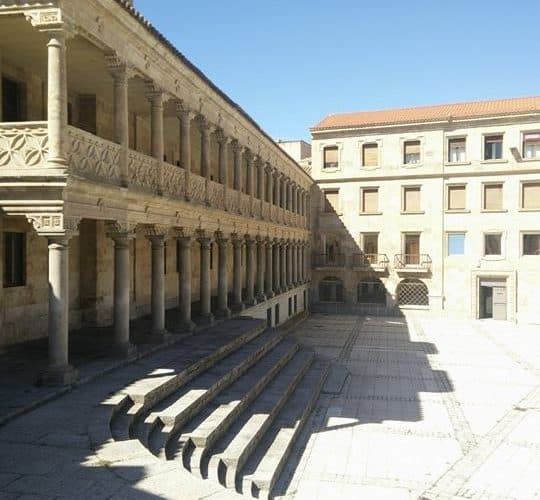
I’m living in Spain now. I’m not going home until Christmas and in this post, I’m going to tell you how I feel about spending the next couple of months in Salamanca.
Disclaimer: I still don’t have a decent camera for pictures and I probably won’t for some time. I’m sorry about the crappy quality pictures, I’m working on it. Also, if anyone knows of any good cameras, feel free to let me know.
I’m just going to jump right into it. I love it here. Salamanca is the city I never knew I’d always dreamed of. On the one hand, the city centre is small enough for it to feel like a tightly-bound city of young, vibrant people. It’s also small enough for me not to need a bicycle, a car or anything else. After 10 minutes of walking, I can be just about anywhere I need to be.
On the other hand, Salamanca is big enough for it to feel like an important city in the landscape of Spain. On that note, there are tonnes of students here. I’ve been told that of its 140.000 inhabitants, 30.000 are students at the University of Salamanca (which was founded 800 years ago, by the way!). That group includes about 7.000 exchange students, so it’s easy to feel at home and make new friends here.
I’ve been here just short of a week, but I can already tell that the urban life in Salamanca is exactly what I’m looking for. To me, it feels like a low-key version of New York City – the city that never sleeps.
No idea if this is only for these first weeks or if it’s always like this, but it seems like there is always something going on. Food trucks, salsa classes, bull fights or pick-nicks in the park. I might not even get to do the things on my Spanish bucket list. Oh well.
To give you some kind of idea of the kind of things that happen here: this is what we came across on our second day in Salamanca.
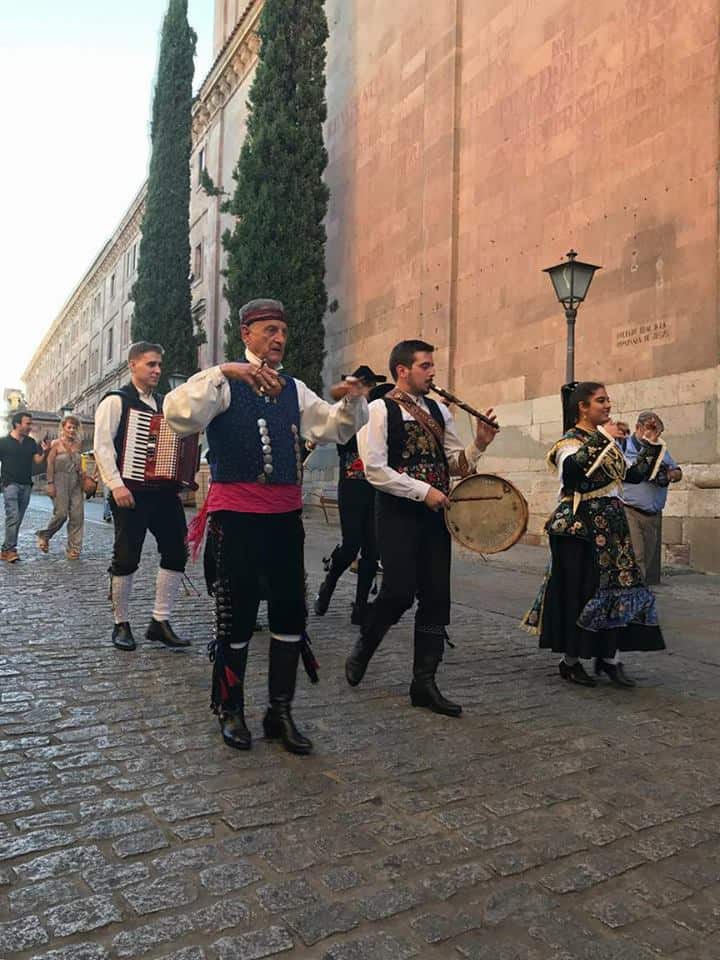
These people were casually parading through the city centre, playing what I assume to be Spanish music. It was fun.
Oh. My. God. The food. The food is so good. Everything you’ve heard about the Spanish cuisine is true. Unless you’ve heard that it’s bad.
When my parents were still here, we went out to a tapas bar (yes, just tapas for dinner). In case I still haven’t made it clear yet, let me spell it out for you. D-E-L-I-C-I-O-U-S.
Here are some pictures of our tapas night out.
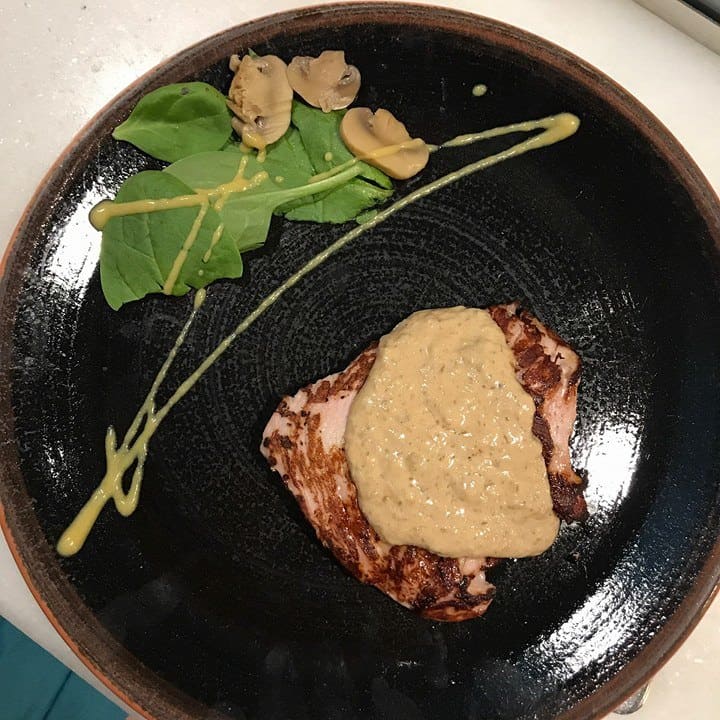
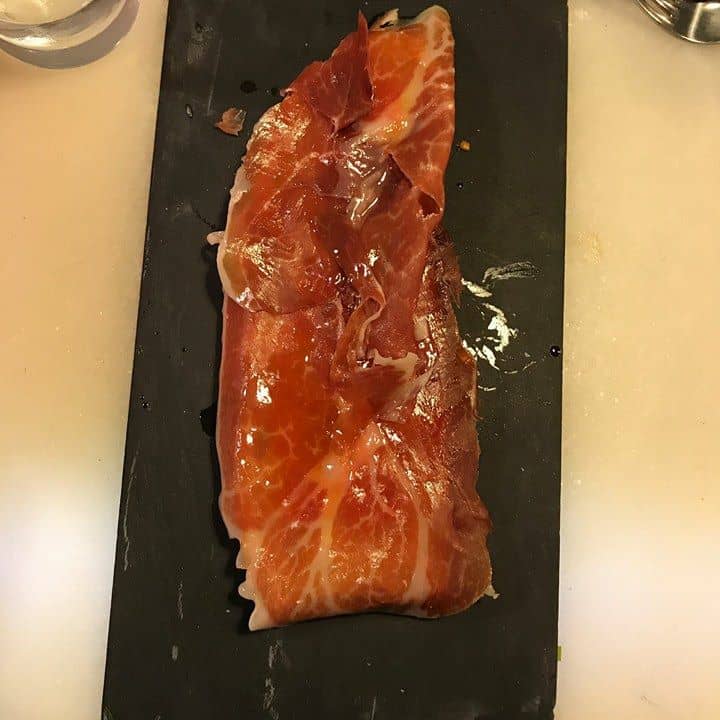
The city centre of Salamanca is not only lively and vibrant, but it’s also beautiful. Most buildings are made of some sandstone-ish stone, giving the city a very uniform but soft look.
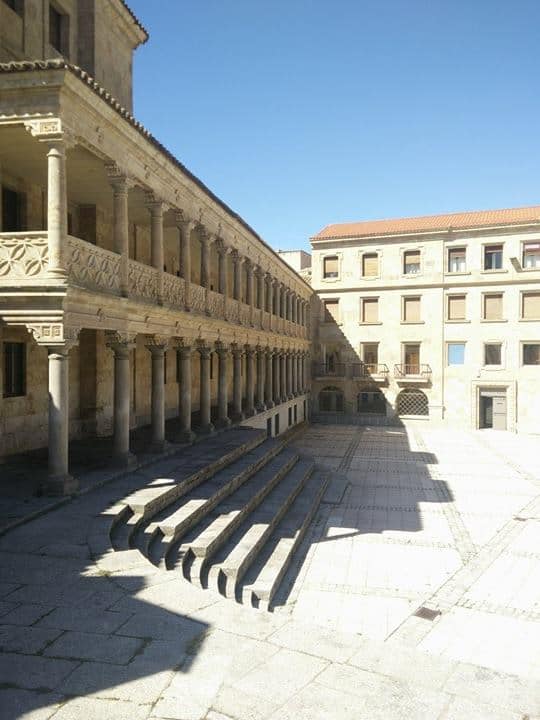
Sights like this plaza are quite common throughout Salamanca.
Moreover, Salamanca seems to be very much based on its heritage, while it’s also a pretty modern-looking city. By ‘based on its heritage’, I’m referring to the old cathedral, university buildings and monastery (see picture below).
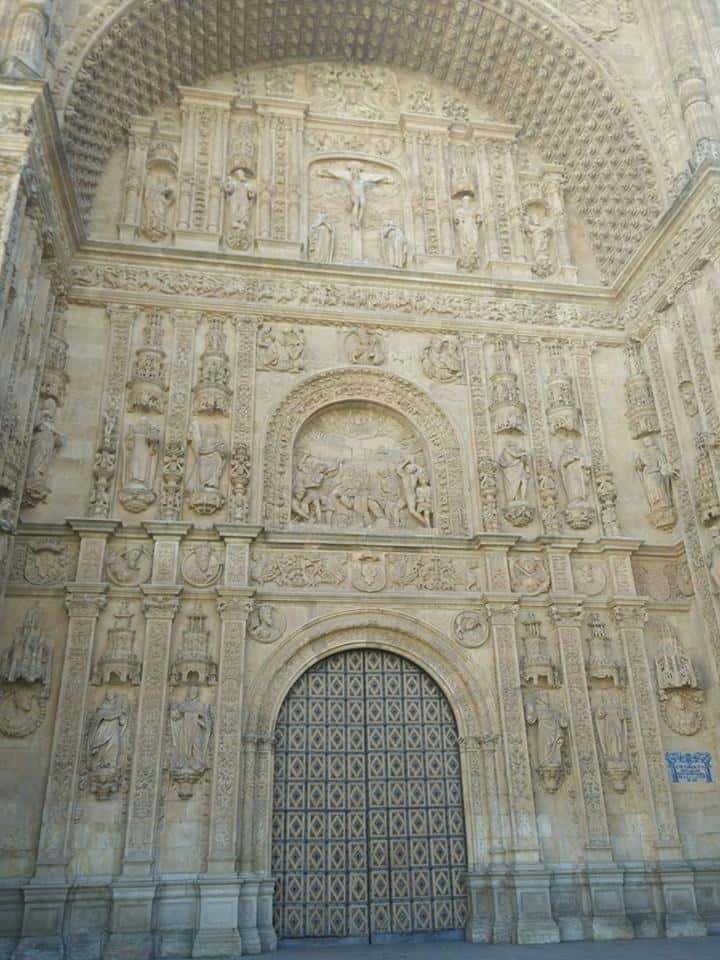
As far as nature goes, I have yet to see anything VERY impressive. I went to a park at about 10 minutes from my new home, there’s a river, and there are quite a lot of small green spots in the actual centre, but other than that, nothing really jumps to mind.
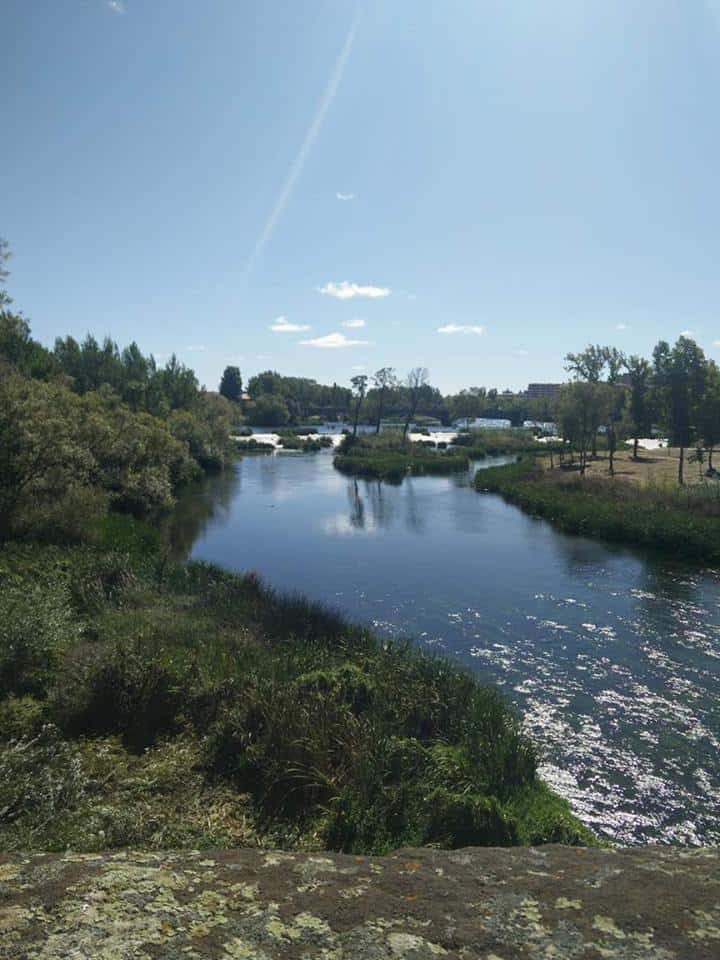
View of the river Tormes from the Puente Romano (Roman bridge)
Salamanca is the city of dreams. I’m incredibly excited to spend the next months here, because a semester abroad is basically like a very long solo trip (but you have to go to school as well).
I think I’ve made you all jealous enough for one blog post, so I’ll just call it a day here. I don’t know when I’ll upload my next blog post, but I’ll be sure to announce it on my Facebook page, so keep an eye on that.
P.S. Check out the travel video I made of my first few days here!
Thanks for reading!
-S
As many of you may or may not know, I’m taking a semester abroad to study in Spain. I’ll be there between September and January, which means I’ll probably end up having some time to explore every corner of Iberia. That being said, let me walk you through the things I want to visit in Spain next year.
As I’m leaving for Spain in less than a month, I think it’s the perfect time to share this post with you guys. This semester abroad is going to be a huge thing and I’m looking forward to it so much. I just can’t wait to start living in Spain by myself!
Of course, not everything I want to see is in Spain itself. However, the majority of my Semester Abroad Bucket List is made up of Spanish locations. With that in mind, I’ll divide this list into two parts: Spain and Not Spain.
Let’s take a look!
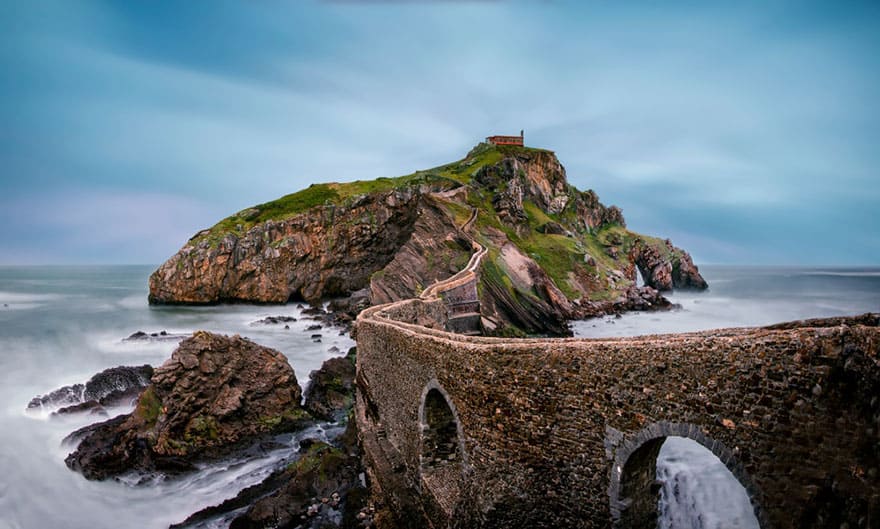
Picture by Pedro Jarque
You weren’t expecting the first entry of my bucket list to be anything other than Madrid, Barcelona or Valencia, right? Well, here it is anyway. Admittedly, the chances of you having heard of Gaztelugatxe before are very slim. So, allow me to explain.
Gaztelugatxe is a tiny island along the northern coast of Spain (Basque Country). The only thing connecting it to mainland Spain is a man-made bridge (that looks amazing, by the way).
I saw a picture of this on a Windows login screen background, and the scenery around the island impressed me so much that I made it one of my top priorities to see Gaztelugatxe in real life one day.
I’m probably going to end up combining a visit to the island with a day or two in Bilbao.
Fun fact: HBO used Gaztelugatxe as a filming location for some scenes in season 7 of Game of Thrones.
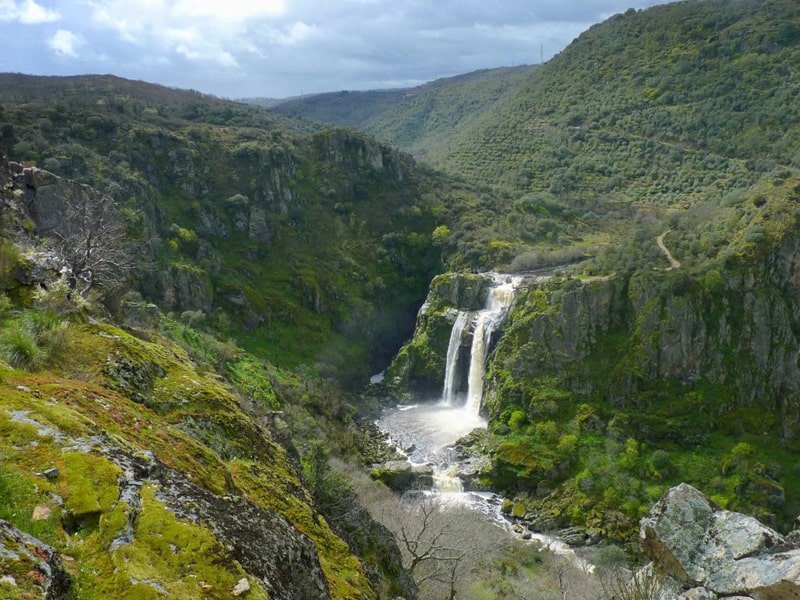
Here comes another name you’ve never heard in your life, and you’ll probably never hear it again after reading about it here. What is Pozo de los Humos and why the hell do I want to see it?
Well, the primary reason why I want to go to Pozo de los Humos is because it’s relatively close to where I’m going to be studying. Moreover, I’m a sucker for nature reserves and waterfalls, so it seems illogical to live about half an hour away of this waterfall for a semester and not visit it.
Fun fact: Pozo de los Humos translates to the smoking waterfall in English.
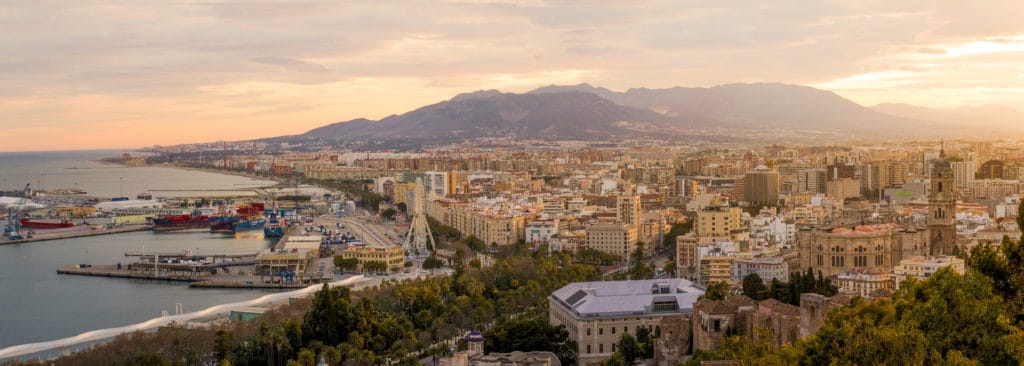
Photo by Adrianna Calvo (Pexels)
As the semester abroad is obligatory for my classmates and myself, all of us are going on an adventure next year. Aside from a couple of friends, most of us are going to various locations in Spain. Within that group, the majority of students is going to study at/around the southern coast of Spain (Málaga, Granada, Huelva, Sevilla, …).
It would surprise me if I managed to go half a year without visiting my friends down in the south. And that’s why this entry is on my bucket list.
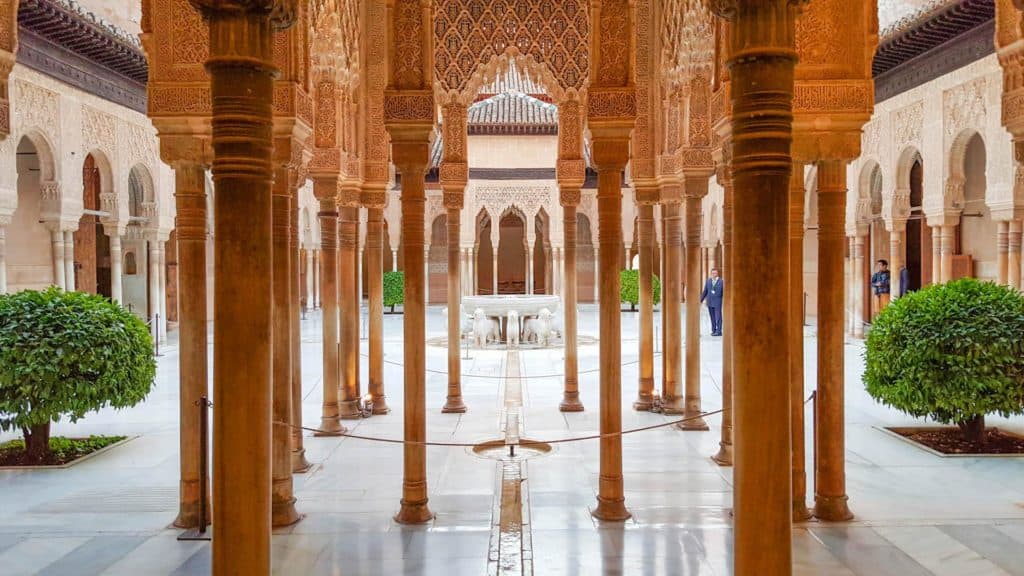
Photo by Geoffrey Morrison
Last year, we had a course about Spanish cultural history. The professor taught us about the history of Spain – which was interesting, but very irritating to study – and he got me hooked on the beauty of old Spanish buildings.
The one building I was most impressed with was the Alhambra. I would honestly travel halfway across the country to get a glimpse of this magnificent piece of ancient architecture (well, not really ancient, but you catch my drift).
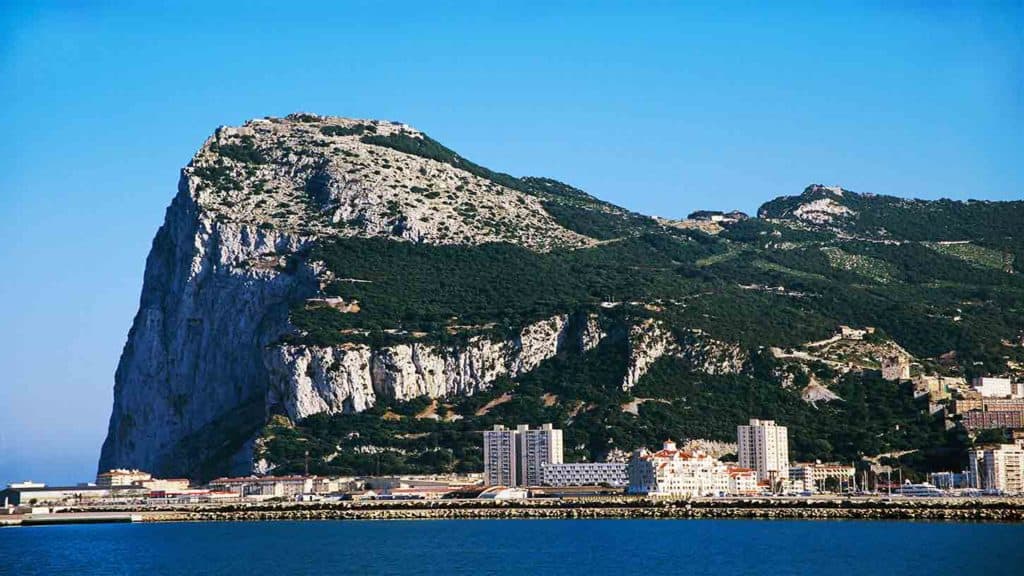
I’ve been waiting to visit Gibraltar for years now, but I’ve never found it to be the right time. If I’m going to do this, I’m going to have to do it now. There’s never going to be a more perfect time to check out the tiny British territory at the end of Spain.
I imagine that Gibraltar would be a perfect place to spend a day and hang out some time.

Photo by Digitalwunder (Pixabay)
Morocco is another country I’ve wanted to visit since I was a little kid. For a typical kid from Belgium, it’s something of a childhood dream. I might get to make that dream come true next year.
I can’t wait to try Moroccan cuisine, ride a camel and stroll through beautiful cities. Another thing I can’t wait to do is try out my very first passport, as I’ve never been outside of Europe.
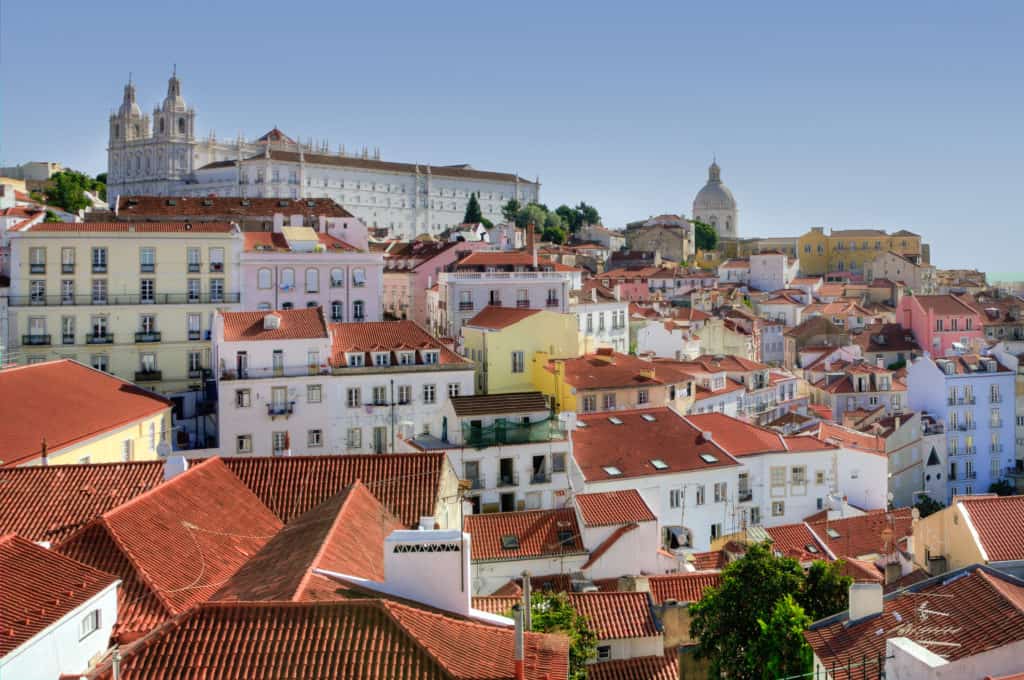
Picture by Peter Heeling (Skitterphoto)
Seeing as I’m going to be spending half a year living right next to the Spanish-Portuguese border, I might as well hop over into the other side. It would be a pity to let all of that Portuguese beauty go unseen, wouldn’t it?
I’ve been to Portugal before and absolutely loved it, so why wouldn’t I love it again next year?
Have you ever been to any of these destinations? What did you think of them? Let me know in the comments!
As always, thank you very much for reading!
-S
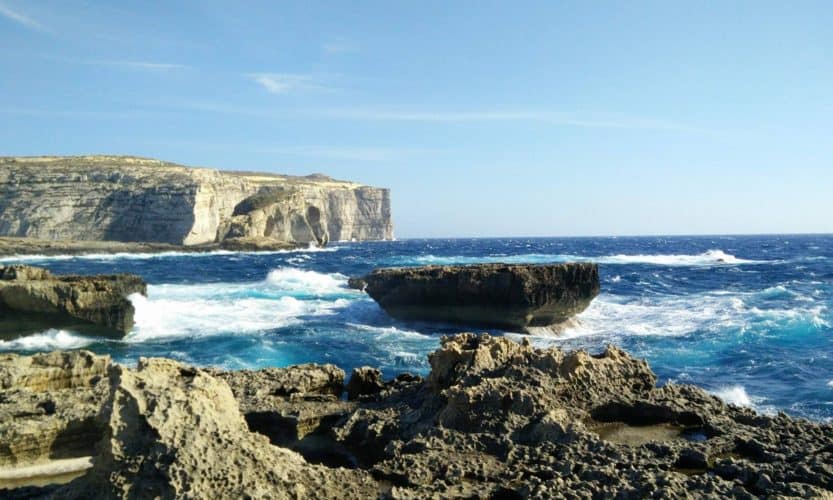
Malta. Many people have heard about it, fewer people know where it’s actually located and even fewer have actually gone there. But let me tell you: after spending six days on this Mediterranean island, I’m recommending it to everyone. And here’s why.
Heads up: this will be a substantial post (5000+ words!), so if you don’t feel like reading all of that, I’m giving you a chance to click away now. Don’t say I didn’t warn you.
If you don’t feel like spending your time on reading all of that, you could also take three minutes out of your day to watch my travel video.
For the unaware, here’s some background information to get you started. Malta is a tiny island located in the Mediterranean ocean, to the south of Sicily. Correction: Malta is a country made up of three main islands (Malta, Gozo & Comino).
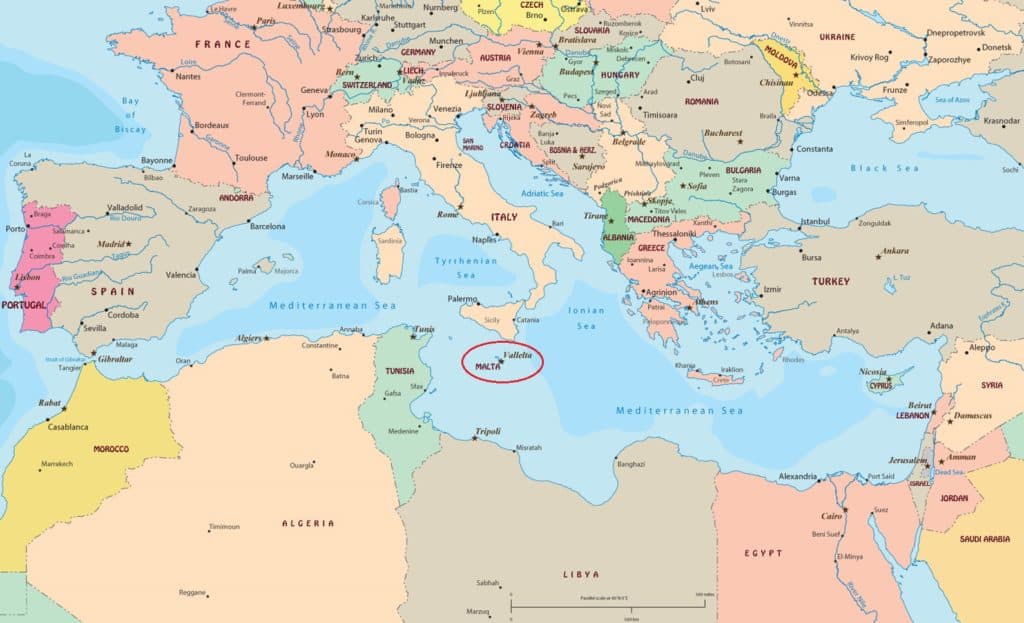
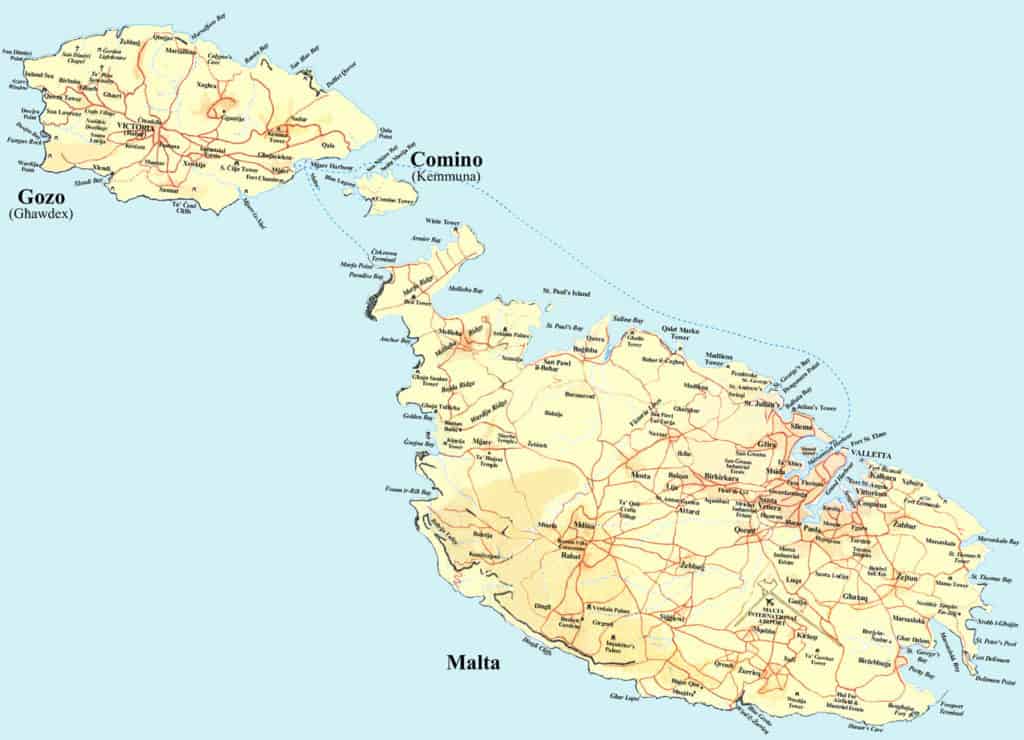
The country’s capital is Valletta, located at the northeastern coast of the main island. Fun fact: Valletta isn’t even in the top 10 biggest cities of Malta (it only has about 6400 inhabitants).
The national language is Maltese, but everyone speaks English, so you won’t have any trouble as a foreign traveler. You might have to try a little bit harder to understand the people, but I’m sure you’ll get there eventually.
Without any further ado, let me tell you about how this was – almost – the perfect holiday.
Disclaimer: this is going to be a day-to-day diary of some kind. If you want travel tips because you’re going to Malta yourself, I’ll list everything at the bottom of this post so you can just skip ahead.
Evidently, I spent some time planning this trip. Around May, I started looking for things to do in the summer and I came across some fun travel destinations. After some contemplation, I decided to go to Malta. And I’m glad I did.
As you can read in my almost-6000-word guide, I read up on what Malta was all about and I picked the things I wanted to see and do. I made a handy map on Google Maps, pinning all the locations I wanted to go to. This gave me a convenient overview of my trip, on a map I was always bringing along on my phone.
Then again, you’re not really interested in that, are you? You only want to know what I did and what I thought of it. And I don’t blame you. So here we go.
My wish list included various things in different cities spread among the islands:
Buckle up!
Of course, my first full day in Malta had to be spent in the capital, Valletta. I say first full day because I arrived at 11:35 pm. Technically, that’s a day as well, but yeah. You know.
After taking a ferry from my Airbnb apartment to Valletta – I was staying at the opposite side of the Grand Harbour – I had to take a lift to get up to the city centre. In doing so, I reached the Upper Barrakka Gardens (totally not worth it, by the way).
The attractions I was most looking forward to were St. John’s Co-Cathedral and the Malta Experience.
Before actually embarking upon my magical adventure, I decided to stop at the Chocolate District and get myself some iced chocolate milk. That turned out to be a very smart decision, because it was just what I needed.
With a belly full of delicious chocolate, I continued up to the Cathedral. Although the entry fee was quite steep (€10 for a regular ticket, €7.50 for students), I think it was totally worth it.
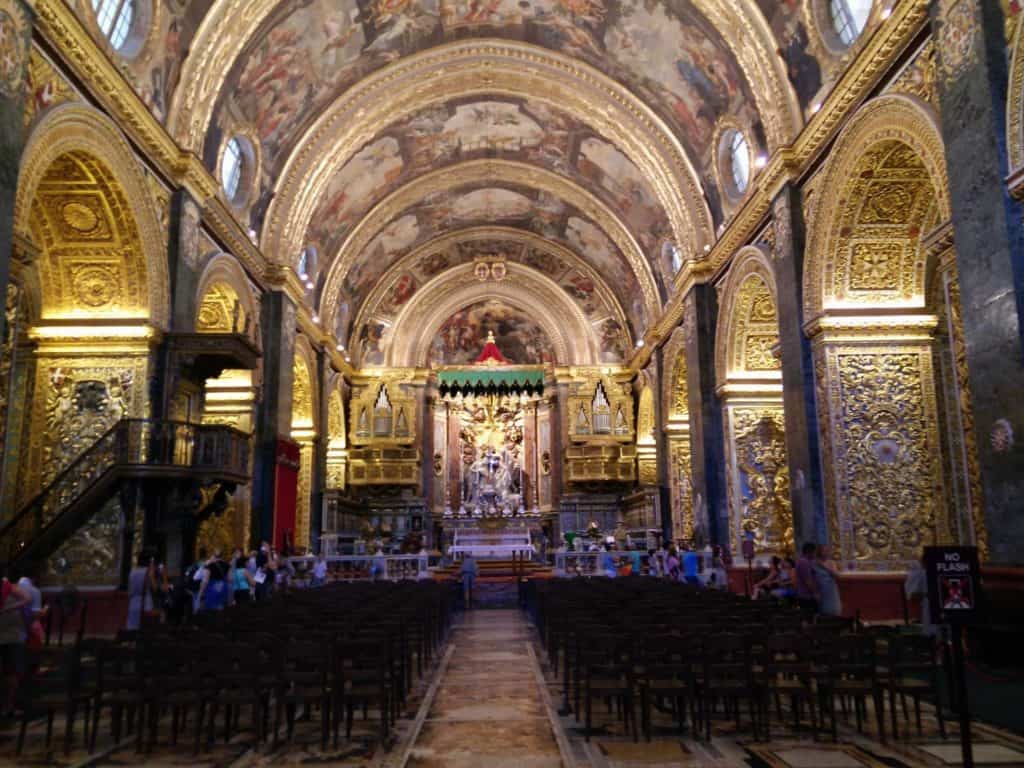
As you can see, most of the interior is decorated royally with all kinds of gold, satin and other expensive things. The entry fee also included an audio guide (available in a wide range of languages) and a visit to the museum. Sadly, this museum was closed when I visited.
One thing I did manage to see was a room dedicated to Caravaggio. Quick background for anyone who doesn’t know: brilliant baroque painter whose name is actually Michelangelo, known for revolutionizing painting techniques with chiaroscuro.
In high school, I had an art class where the teacher was kind of obsessed with Caravaggio. He had a way of conveying his passion to us, the students, which is why I felt like this room was worth a visit.
After spending some time in this gem of a church and getting some quick lunch at a nearby bistro, I made my way up to the Malta Experience. This was a 40-minute audiovisual spectacle where the history of Malta was explained in a concise and entertaining way.
I would definitely recommend going here to any history buffs out there, or to anyone in general, really. Even if you don’t like it, you can just sleep for 40 minutes and listen to what other people thought of it.
Apparently, when I bought my ticket to this history show, the clerk behind the counter misunderstood me and gave me a combo ticket for both the Malta Experience and a guided tour through the Sacra Infermeria.
This tour was supposed to be me and two other people, but they never showed up, so I got a private, guided tour through a 1574 hospital. It was a pretty cool tour, but it’s not worth it to get the combo ticket. Just visit the Malta Experience and get on with your day.
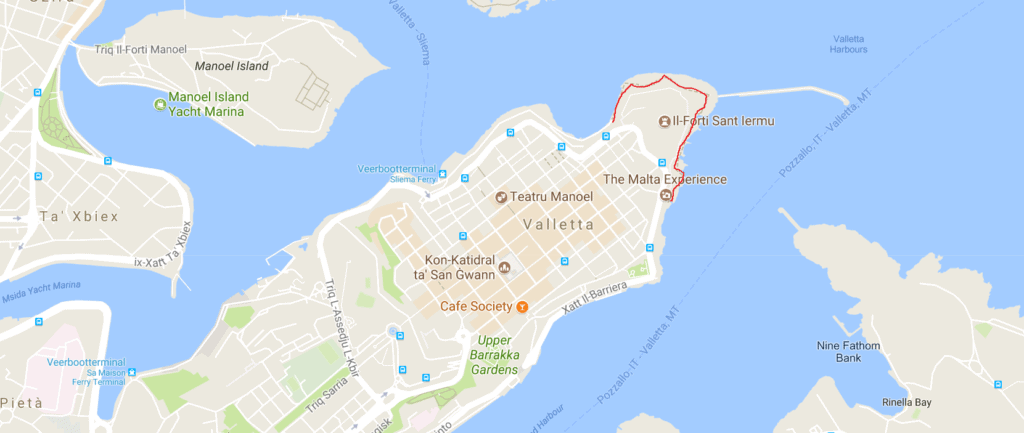
So, let’s see. After everything that happened so far, it was about 5 pm. Earlier, I had sent my host Daniel a message, asking if he wanted to get some dinner with me. He agreed, and said he’d come to Valletta around 7. This meant that I had two hours to fill and no activities to fill them with.
Until I noticed a walking route along the seafront of Valletta. Well, to be clear, it wasn’t really a walking route so much as a secret-ish pathway through the rocks and nature.
So, I followed it. And I’m very glad I did. The path led me to some of the most beautiful things I saw in Valletta, like this shot of the coast line. (The picture is #nofilter, by the way)
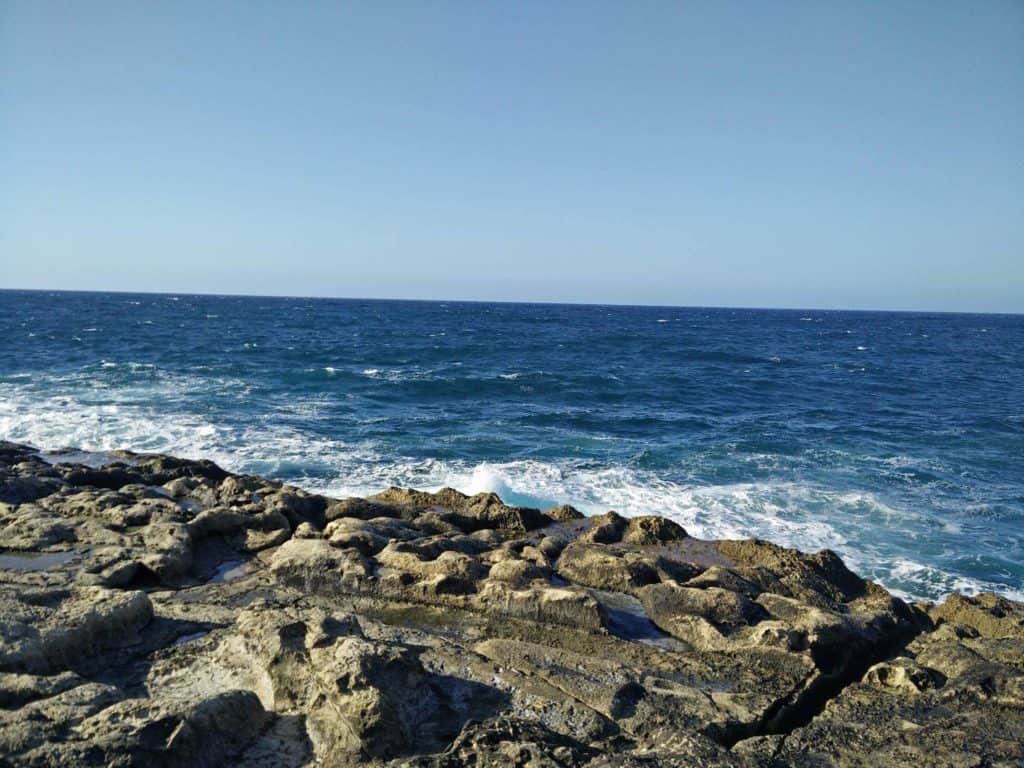
After some more light hiking, I found myself at the other side of Valletta. That was fun. Until I realized that I was going to meet up with Daniel at this bar/restaurant called Gugar, which was like another 15 minutes’ walk from where I was.
By the way, I really recommend Gugar to anyone who is looking to grab a quick bite. It might not look like a place you’d spontaneously go to if you want to eat, but it really is worth it.
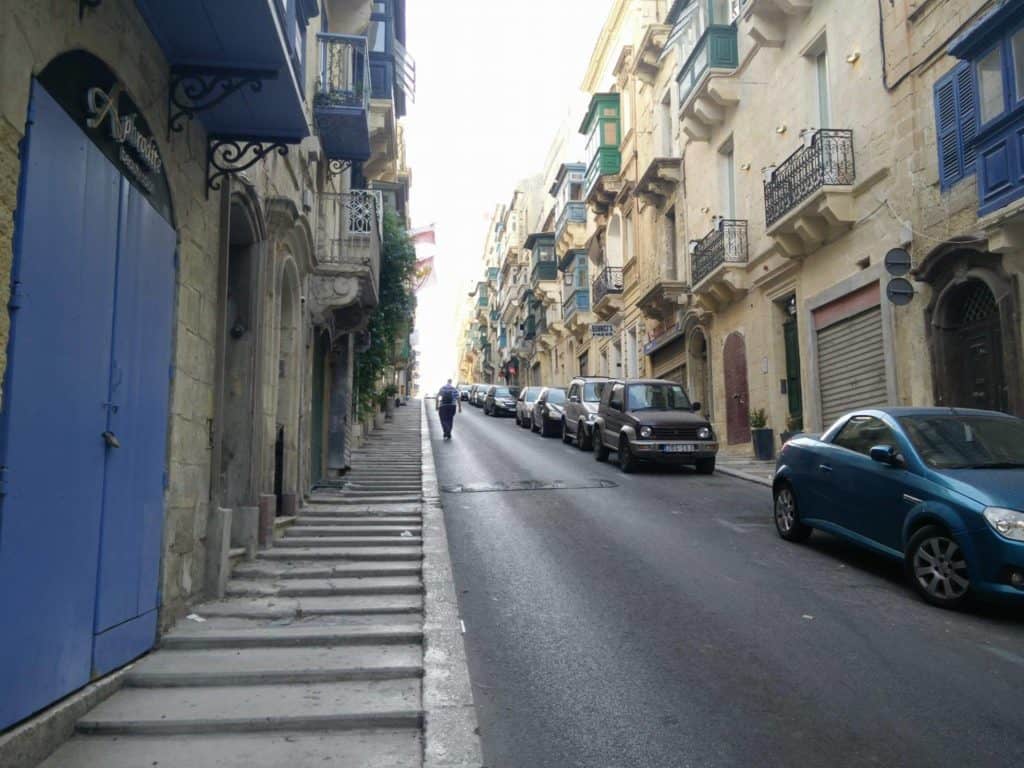
After sharing a meal with Daniel, we walked around a little bit and took in the atmosphere of Valletta. Of course, at one point, we had to go back home.
Daniel’s house isn’t located in Valletta, but in Bormla (also known as Conspicua), a town at the opposite side of the Grand Harbour. This meant that we had to take a ferry to get back there. While waiting for the ferry, this is what we were looking at.
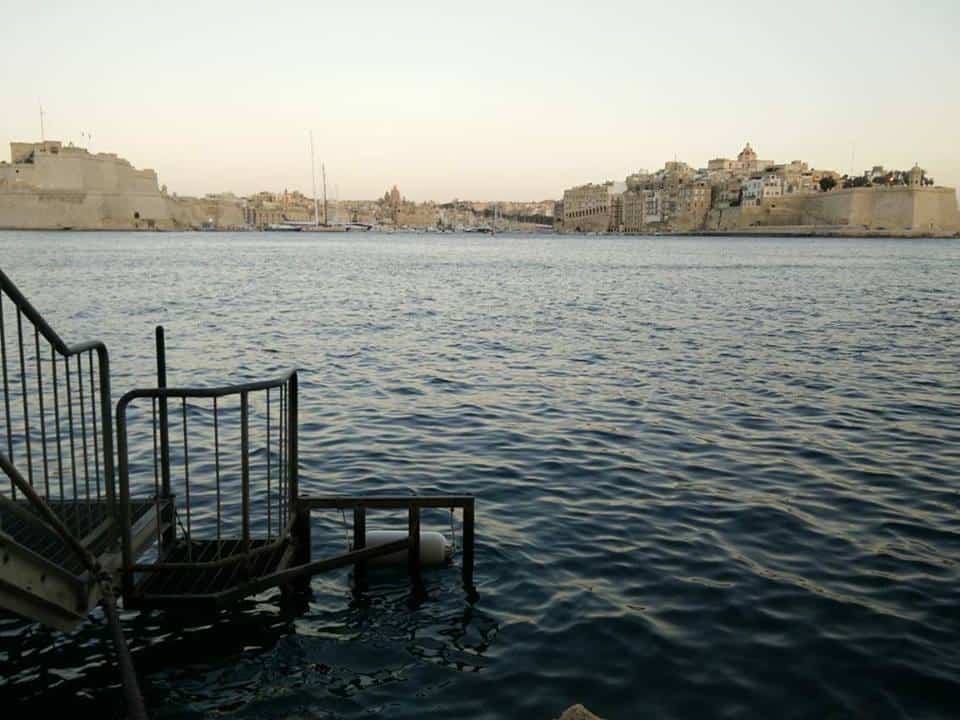
I spent my second day in Malta wandering around the beautiful cities of Rabat and Mdina. I don’t have a lot of pictures of this day, because I spent most of it either walking around catacombs or accompanied by an American family.
I started the day off by taking a bus to the city where every building is made of limestone, where silence prevails and where every road looks so alike that you won’t get out of there without getting lost. That city is called Mdina.
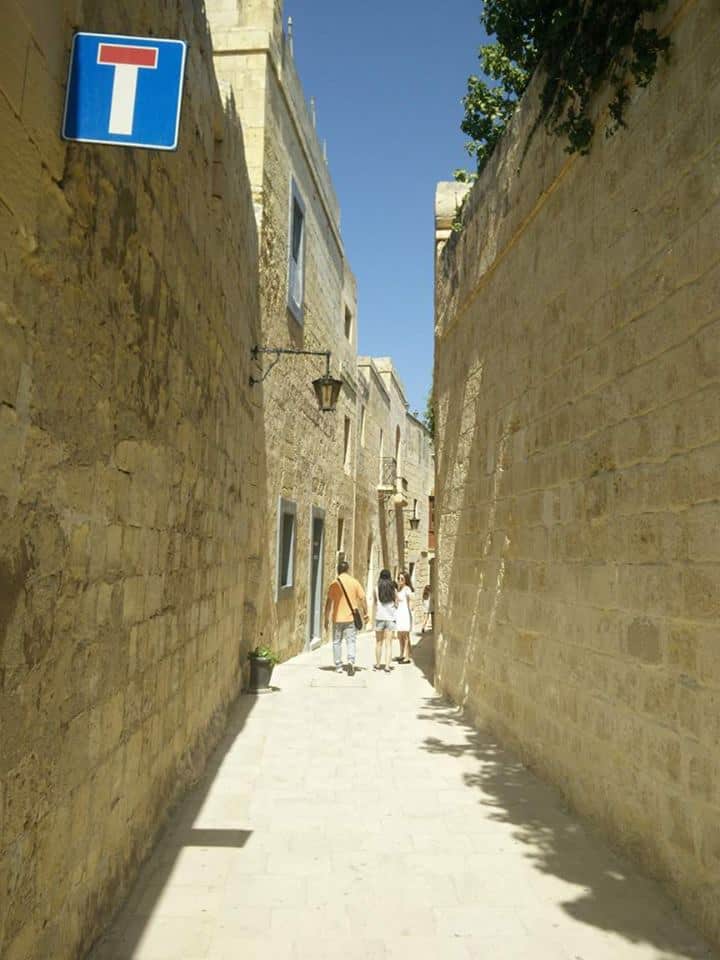
It’s so much fun to just strolling around and taking in the beauty that is Mdina. Looking at the buildings and realizing that this town has 4000 years of history worked into it gives you an amazing feeling of insignificance.
My plan for Rabat was to visit one museum, one church and one set of catacombs. I got started with the catacombs. And of course, my plans quickly changed.
While exploring the catacombs, I found myself in one room, together with an American mother and her son and daughter. The daughter was reading the explanation of the room aloud to her brother and I was listening along (because I was too lazy to read it myself).
At one point, we started talking and I asked them whether or not it was okay if I stayed with them for the rest of the catacomb tour. Luckily, it was, and we discovered all the secrets the Maltese underground had to offer.
When we left the catacombs, we quickly found out that our schedules for the rest of the day pretty much collided. We visited a museum and a church together after that.
Eventually, we had to go our own ways. We quickly exchanged telephone numbers before they hopped back on their bus. (@ Family: if you’re reading this and you’re ever coming to Belgium, you’ve got a place to stay!)
So let’s recap. We’re two days into our Malta trip, and we’ve seen the (arguably) two biggest and most important cities on the main island. However, one thing we haven’t done is take a look at the other two islands that make up the country of Malta.
The second biggest island, Gozo, is mainly known for its relaxed attitude and beautiful nature. I experienced both.
My main plans for Gozo: make my way to the beach, chill there for a while, make my way to the other side of Gozo and sleep in a temple. Yeah.
Okay. So the main goal of my day in Gozo was to find a nice beach, lie down and chill for some time. To some extent, that actually happened. But other things happened as well.
The most annoying part of Gozo was transport. I had to take a bus from Bormla to Valletta, then transfer to another bus from Valletta to Cirkewwa, then take a ferry from Cirkewwa to Mgarr, and then take yet another bus from Mgarr to Qorrot.
If that was confusing to read, try doing it in real life.
I’m coming at you with another Google Maps screenshot so I can show you just what I had to do to get to the beach.
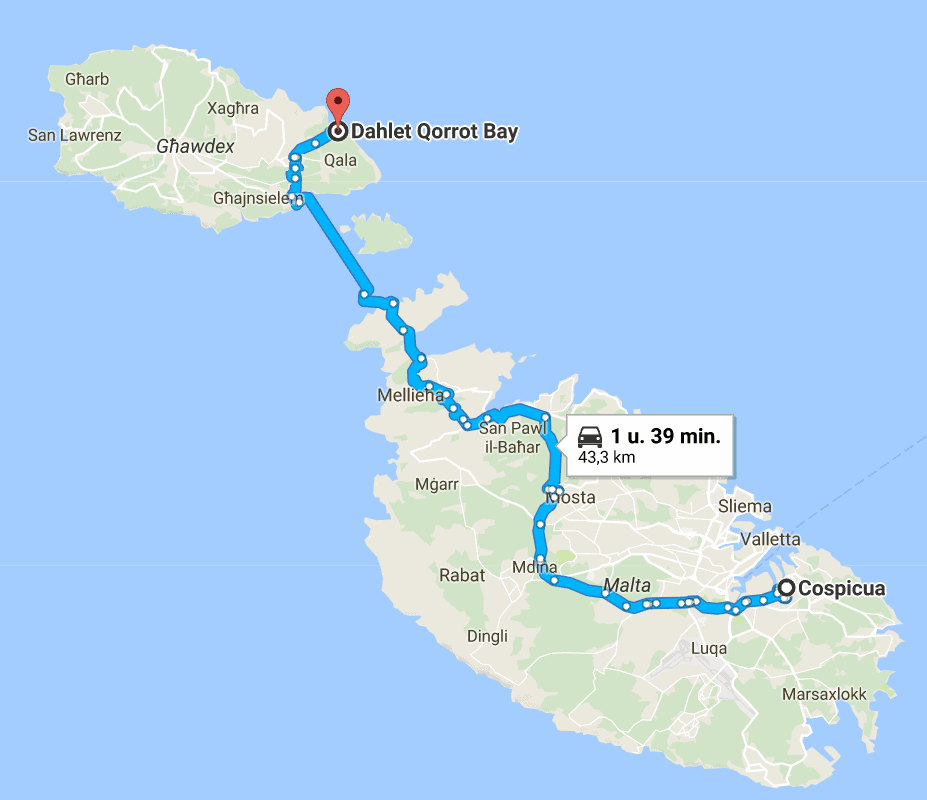
Three buses and one boat ride later, I arrived at the last bus stop. From there, I still had a 25-minute walk left to go until I reached the beach. That walk was mostly downhill, which was a blessing. Well, it was a blessing until I realized that I’d have to walk uphill for 25 minutes when I went back.
Anyway. On the way to the beach, I noticed two people holding hands, walking in the same direction as I was. I accelerated a little bit until I was walking alongside them.
The girl was the first one to start talking. She asked me if I knew where the beach was. I told her I was looking for the same beach and I joined them. We started talking and I found out that they were from Poland. They were also on a holiday, exploring Malta for about a week.
After a while, we arrived at the beach. There was nobody else there, so we had the whole thing to ourselves. So we got out our towels, found a sunny spot in the sand and got settled.
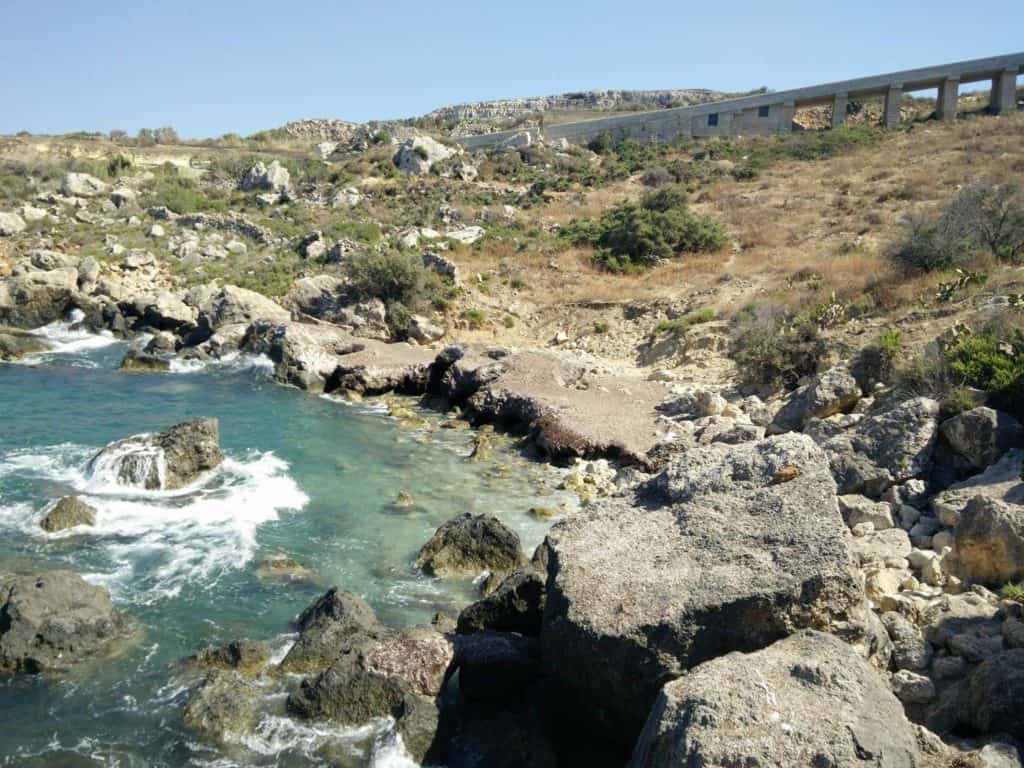
Of course, I didn’t try to intrude into their romantic getaway too much. I went for a swim went I felt like they needed some privacy, and I think they appreciated that more than they let on.
After about an hour and a half, the Polish couple said goodbye, got up and left. I stayed at the beach for another half an hour, and then I got going myself (you know, because I still had to find my way to the other side of the island).
“Wardija? What in Pete’s name are you on about?”
I can hear you think it. Remember when I told you that my plan was to sleep in a temple? That temple is Wardija. More specifically, it’s called Wardija Punic Temple and it looks like this.
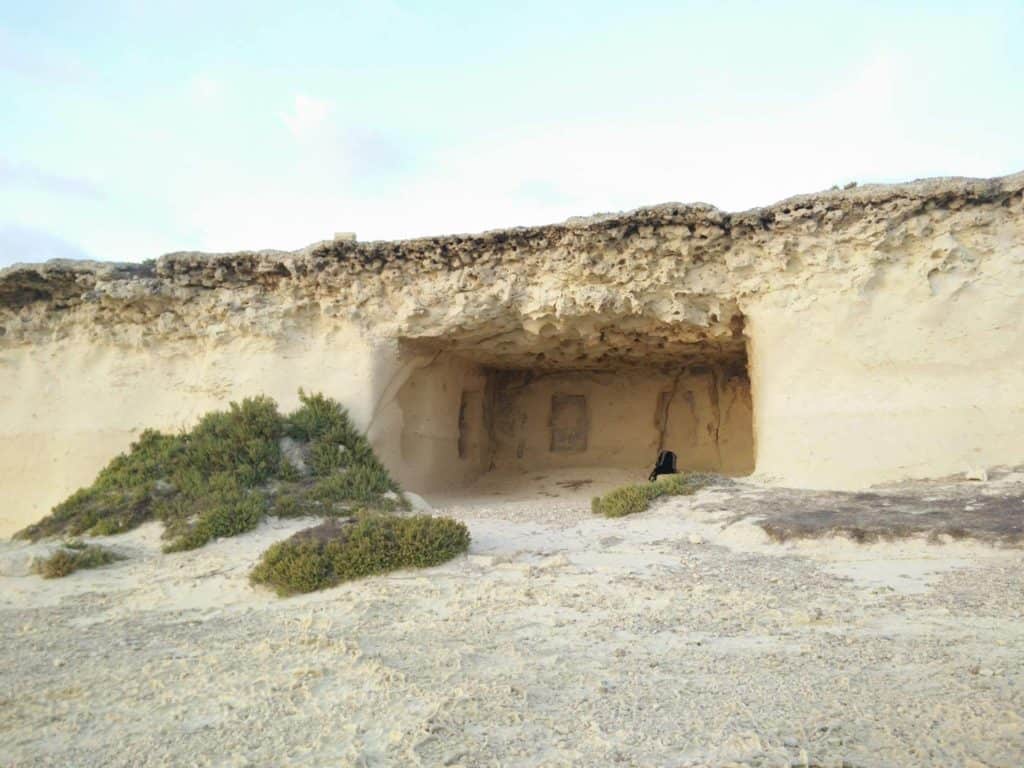
Also, here’s another Google Maps screenshot to indicate just how far this temple was from where I was at the time (Dahlet Qorrot Bay).
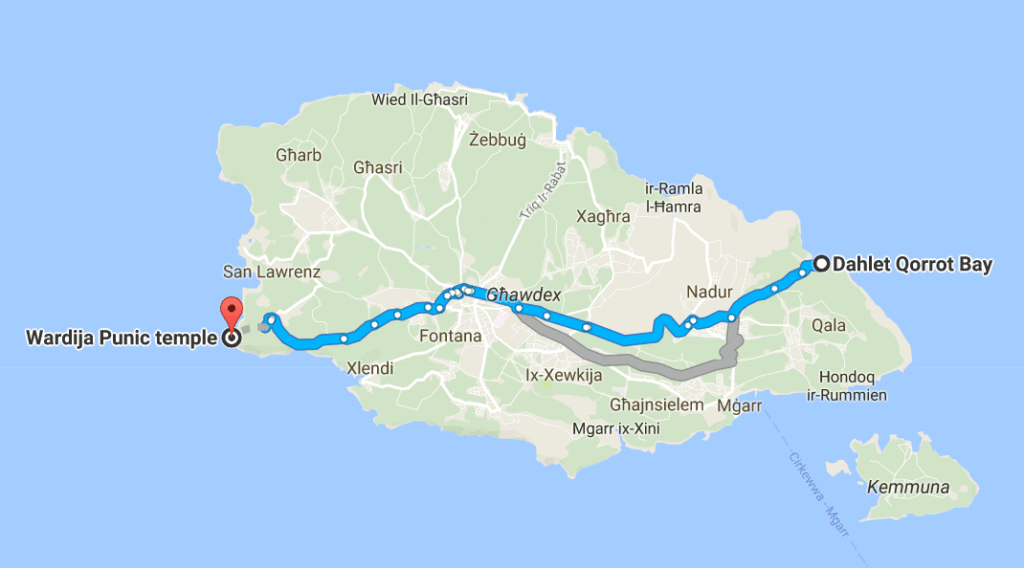
Again, it might not look like much, and if you try to look this route up yourself, you’ll find that it takes around half an hour to get to the temple. By car. Of course, I didn’t have a car, so it took me quite a bit longer than that.
For me, this route was the most adventurous one I went through during my week in Malta. It involved missing two buses, hitchhiking, just barely catching yet another bus and 45 minutes of hiking.
Situational sketching: it’s 4:30 pm, I’m alone at a beach (Dahlet Qorrot) and I need to get to the other side of Gozo before dark.
Earlier, I had to walk downhill for 25 minutes in order to reach the beach. Well, now was the time to do that walk in the other direction. Of course, as my luck would have it, I was out of water, it was 32°C and there was no shadow at all.
After about 15 minutes, I started feeling kind of dizzy. While I was walking uphill, I noticed a rental car on its way down to the beach. I stopped the car and asked the driver (who was a French man on a holiday with his family) if he had any water I could take a sip of. Luckily for me, he did, and he was kind enough to give me some water.
French guy, if you ever stumble across this post and somehow get to read this, I’m eternally grateful. You may have saved my life that very day. Thank you.
With this renewed power, I managed to make my way up to the bus stop. There, I waited for another 10 minutes, only to realize I was waiting at the wrong bus stop, and the bus I was supposed to take (which passed a bus stop right around the corner) had already left 5 minutes earlier.
Although slightly demotivated, I quickly thought of how I still had a long road ahead of me and started walking toward the next bus stop. On the way there, I had the brilliant idea to start hitchhiking, as a way of getting to my destination more quickly.
And what do you know? It worked.
After another 10 minutes of walking and hitchhiking simultaneously, there was this one guy named Mike who was friendly enough to stop his car and let me (and my backpack) in. He took me to Victoria, the main city of Gozo, where I was supposed to transfer and take another bus.
While we were in the car, Mike and I started talking. I found out that he was born in Australia, but his parents moved to Malta right after his birth, so he grew up there. Later, when he was an adult himself, he moved to Gozo, because he liked the way life moved more slowly there.
It was an interesting talk and I’m very grateful to Mike for picking me up and shaving some time off my trip. He dropped me off at the bus station of Victoria and he got going again.
When I got out of Mike’s car, I looked around me, a little confused, and found my way to the information board right next to the bus terminal. Just as I figured out which bus I had to take – thank you, Google Maps – I saw that bus arrive.
I hurriedly got out my money, paid for a ticket, and got on the bus. After a 15 minute ride, the bus arrived at the last stop: Dwejra. You might know Dwejra as the location of the Azure Window (which recently collapsed).
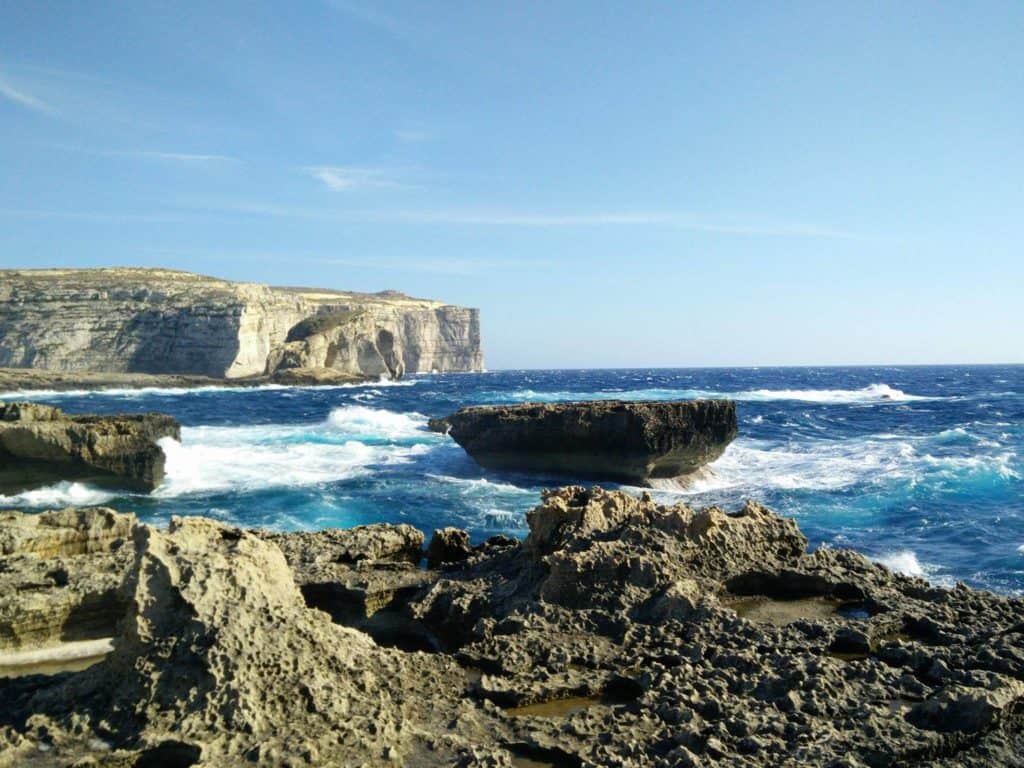
Earlier that day, my host Daniel had told me how to get from the last bus stop to the temple. There was a path through the mountains and plains that would take you all the way there, if you were willing to hike for another 45 minutes.
Of course, as it was my intention to go sleep in the temple, I was more than willing to do that.
When my bus arrived at the Azure Window, I took in the beauty of the ocean’s waves crashing against the rocks and the smell of the salty water. After this #blessed moment, I decided to get up to strength and get some dinner. After all, this was going to be my last meal until I woke up, hiked back, and found something to eat.
I started hiking. And I continued hiking. I’m talking about 45 minutes that were too boring and uneventful to even talk about. So I’m just going to skip ahead to when I arrived, if that’s okay with you.
Eventually, I took the last turn and arrived at Wardija. But then, I noticed that two other people were already in the temple that was supposed to be my bedroom for the night.

I quickly found out that these two people were a French couple who were hiking around. They were planning to watch the sunset at this temple, take some pictures, and head back to their hotel/hostel/dorm/…
And then along came I. I introduced myself to them and I proposed to watch the sunset together, because I was going to have to spend the next 12 hours there anyway. So, again, I ruined a couple’s romantic plans, but I don’t think the French guys minded as much.
Luckily, they agreed. We sat alongside each other, talked about everything, took pictures and listened to music. And then, suddenly, it was time for them to get back, because they wanted to be back by nightfall.
It was at this time that I realized the time was perfect to take some pictures. After all, it was the perfect hour, and the scenery around me was already so beautiful as it was. And that’s the story of how I, a photography newbie, managed to take this picture.
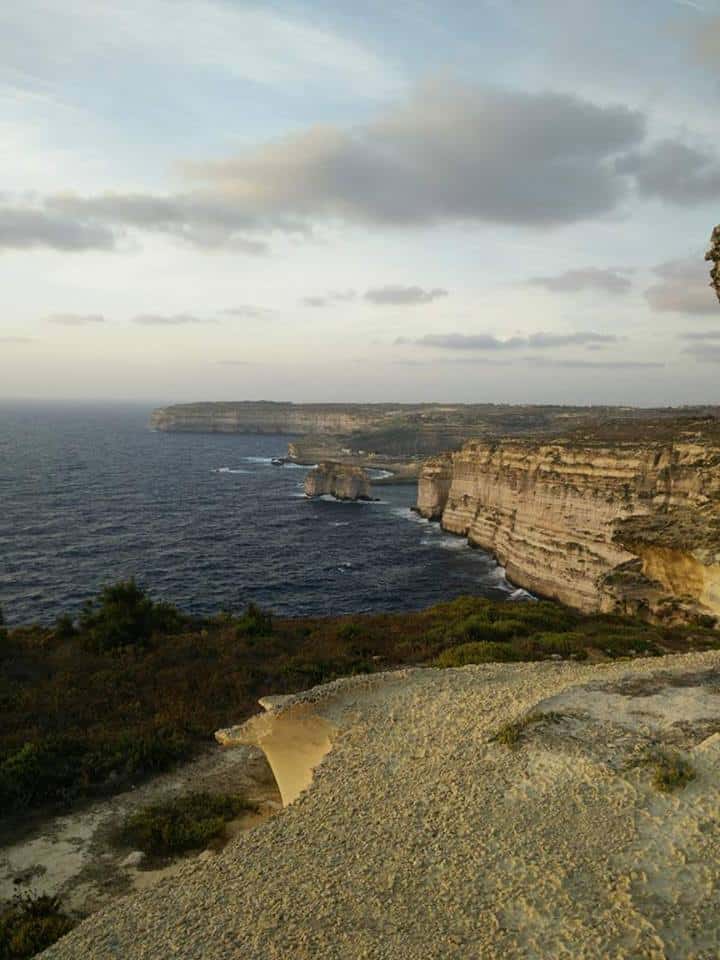
So, I was now alone. In a temple 45 minutes from the nearest sign of human civilization. As I had no cell reception, I kept myself busy watching the sun slowly fall down into the ocean, listening to music and dancing around like nobody was watching – because, you know, nobody WAS watching.
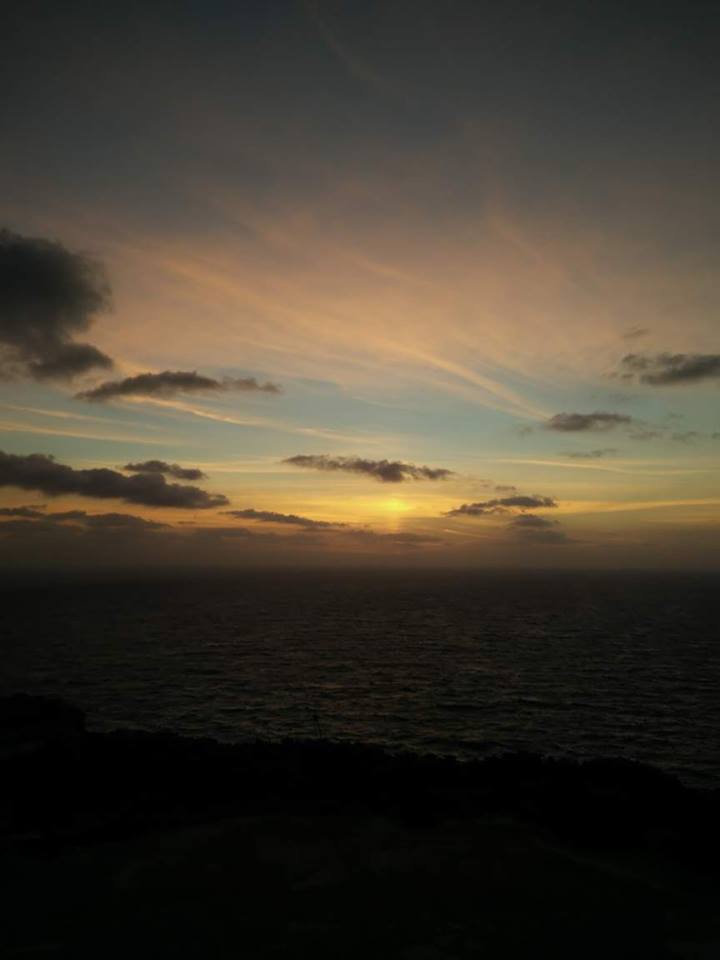
Around 9 pm, I literally decided to go to bed out of sheer boredom. When I went back to the temple, I noticed a crack in the back wall. Upon closer investigation, that crack seemed to be housing a number of beetles. It looked terrifying in the dark.
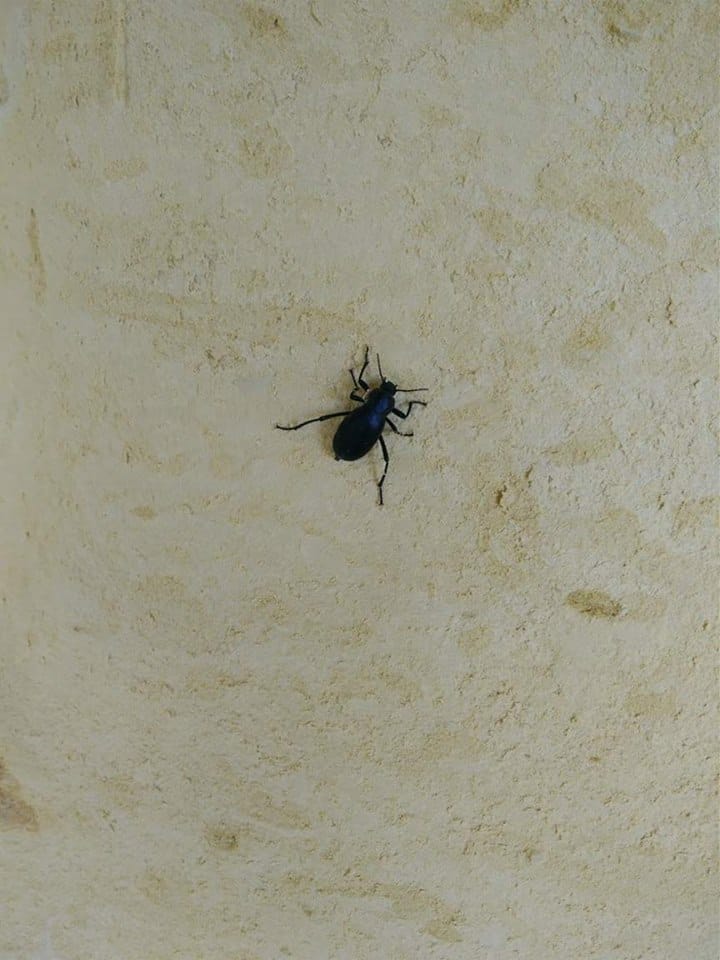
After making sure that the beetles weren’t going to hurt me (like the scarabs in The Mummy), I was able to fall asleep rather quickly, considering my poor sleeping position (my mattress was a towel).
I only woke up once during the night. At around 1:30 am, I decided to check out the stars and listen to some more relaxing music. I was awake after all. The stars were magnificent, and I’ve never seen so many at once. Sadly, I wasn’t able to take any good pictures of this, because my phone camera isn’t the best.
At 6 am, I was awakened again. This time, it was the early morning sunlight that woke me up. Luckily, I fell asleep again quickly. I woke up two more times, at 7 and 8.
Eventually, I decided to head back home at 9 am. While I was brushing my teeth (yes, I brought a toothbrush and toothpaste), two Spanish people walked by. I had a chat with them and found out that they were father and daughter, hiking around in the area.
After that, I finished packing up my stuff and headed back to Malta.
So now, three days and one morning have passed, and I’ve been to Valletta, Mdina, Rabat and Gozo. As I was already close, I decided to dedicate day 4 to visiting Comino, the third island that makes up the country of Malta.
As you may or may not know, Comino is most known for its Blue Lagoon. Well, when I say it’s most known for the Blue Lagoon, I really mean that there is literally nothing else to do on the island.
Comino is 3.5 square kilometers, car-free and it has one hotel. Aside from the Blue Lagoon, there’s really no reason to come there. Or so I thought.
I went to Comino by ferry (a return ticket from Gozo will set you back €10). Initially, I thought I’d see a lot of clear blue water when I arrived there, which I actually did. Only thing was, it was filled to the brim with swimming tourists.
Now, as I had swum the day before in Gozo, I didn’t want to swim here. Also, I didn’t really feel comfortable leaving all my stuff out on the rocks while I’m in the water by myself.
Anyway. Upon arriving at the island, I started thinking it was a huge mistake to come here, as I wasn’t going to swim anyway. I got off the boat and started walking in one direction. And I kept walking.
That’s how I found some little-known spots at the backside of Comino, like this one. Although the water wasn’t as ridiculously clear as in the Blue Lagoon itself, I still thought this was worth the 10-minute walk.
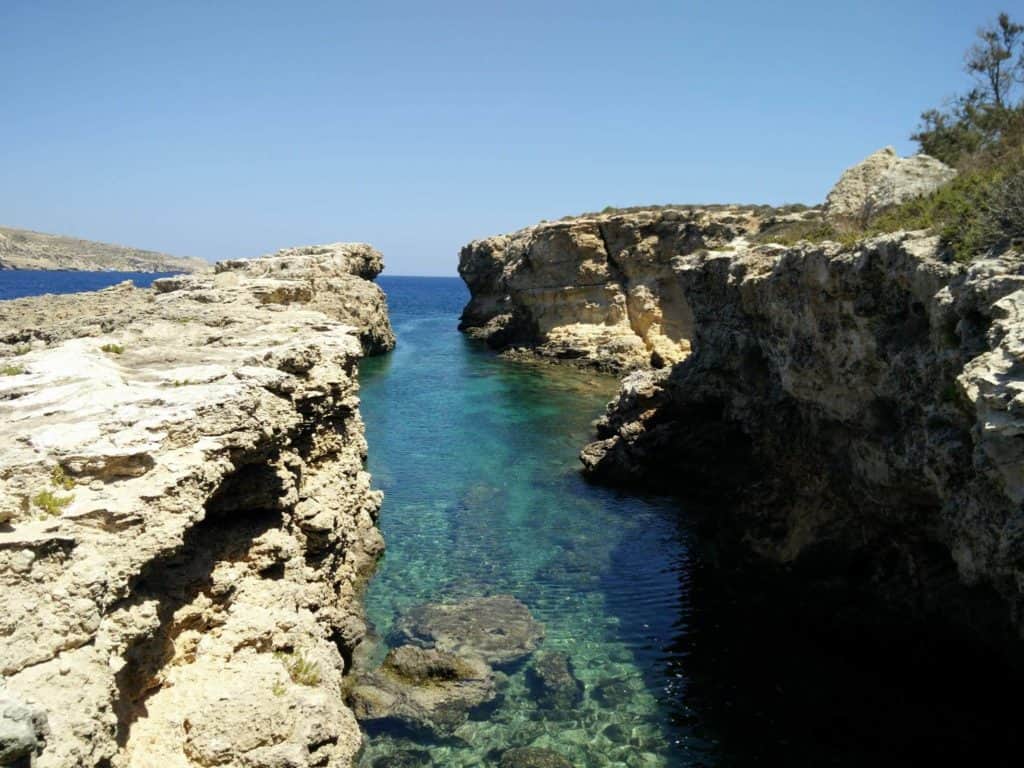
That was really all that there was to do there. I spent half an hour wandering around, looking for spots to take pictures and make little video clips for my travel video, but after that, I really had seen it all.
On my way back to the ferry, I chatted with a girl from London who was waiting for someone there. I also bought a Popsicle from an ice cream stand because I was about to start melting down.
After that, I took the ferry back to Gozo, then another ferry back to Malta, and then a couple of buses, until I ended up back in Bormla around 4 pm. For the rest of the day, I didn’t really do anything exciting. I went to the grocery store, Skyped my parents, and had ramen noodles for dinner.
The next day on my trip was to be spent in the city of Mosta, a town some 15 km (9.3 miles) from Daniel’s apartment. I grossly overestimated the amount of activities and things to do in this town, though.
I was going to visit the Mosta Rotunda and the Ta’Bistra Catacombs. Mosta Rotunda is a church with a big, round-arched ceiling, inspired by the Pantheon.
My plan was to visit the church in the morning, then have lunch, then visit the catacombs and then stroll around Mosta until I felt the need to go home. Well, it’s safe to say that that plan failed.
I arrived in Mosta around 11 am. The bus stopped right next to the big church, so I went to the entrance to take a look. There, I found out that the Rotunda wouldn’t be open until 4 pm. Yeah, that happened.
So, I had to switch things up and go for one of two things: I could either visit the catacombs early and have a late lunch, or have lunch first and then go to the catacombs. I went for the first option.
I don’t even want to waste any words on the catacombs. Ladies and gentlemen, if you’re visiting Mosta, don’t go to Ta’Bistra Catacombs. IT’S NOT WORTH IT.
When I was inside the catacombs, the only reason I watched all the videos and read all the information plates is because I had to wait until 4 to get into the church. That should give you some sort of indication of how much fun I had.
I did manage to spend little over an hour at this place, though. So now, it’s approximately 1 pm and I have three hours to walk back to the Rotunda and have lunch. I took my sweet time to pick out a restaurant and to have my lunch (sorry, restaurant owner, I had no idea you were about to close!)
While I was sitting on a bench right next to the church, a street cat helped me fill my time. But then, he ran away and I was left alone. Somehow, I made it to 4 pm and entered Rotunda.
There was no entrance fee, so I was able to get into the church along with some other tourists who – by the looks on their faces – also had to wait all afternoon.
The most impressive (and also, only impressive) part of the church was the 37.2 metre dome ceiling. Other than that, it was basically like any other church.
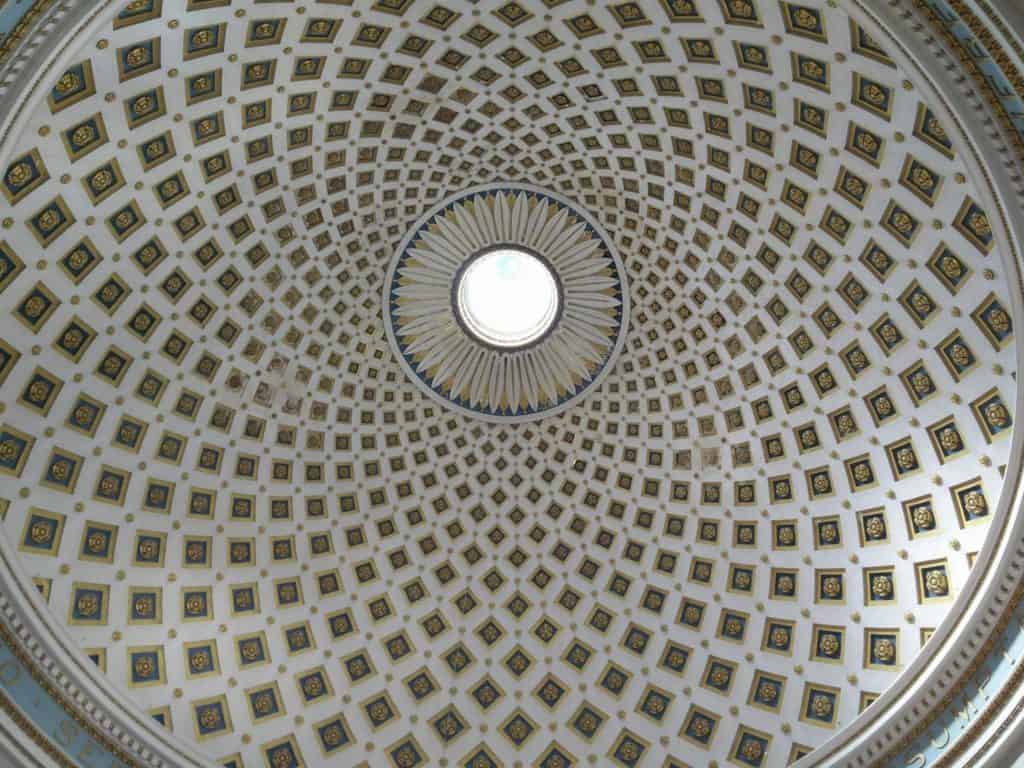
So, all in all, day five was actually a disappointment more than anything. (Hence the or maybe not in the title of this blog post)
I went back home after the church, had dinner, chilled in the rooftop hammock and went to bed.
Yes, you read that correctly. And yes, you’re also correct if you noticed that there’s no scuba diving footage in my travel video. That’s because this was my first time diving, and I wanted to pay attention to what my instructor was saying and what I was supposed to be doing. In other words, I was too busy trying not to die.
Anyway. About two weeks before I went to Malta, I booked a “Discover Scuba Diving” course with Diveshack. Quick disclaimer: they were amazing. Professional, helpful staff and clean, up-to-date equipment. No, they didn’t pay me to say this.
As I don’t have any pictures to show you, I’ll just have to explain the experience of diving to you.
When they said “Taking your first breath underwater is something you’ll never forget”, I thought they were just saying it to convince people to spend money in their shop and dive with them. I now know that they weren’t.
It really is an extraordinary feeling. Swimming along the bottom of the ocean, not having to worry about a thing, as long as you’ve got some oxygen left in your tank.
I even met some new people who were diving with the same instructor I was diving with (Shazz). An American couple living in Malta. They were both funny, light-hearted people and it was a pleasure to meet them and dive with them.
After my dive, I went to a burger bar and got myself something to eat. I hadn’t eaten anything since 9 am, and my dive finished around 5 pm, so you can imagine I was pretty hungry.
My day ended with a bus ride back home, more ramen noodles and the only time I went to sleep at a decent time.
For my last full day in Malta, I consciously hadn’t planned anything. I wanted to have some wiggle space, in case anything else came up. So, I slept in and didn’t wake up until 11 am.
Nothing interesting really happened until 7 pm, so let’s just skip to that.
At 7, I was chilling in the hammock up on the roof again, when Daniel came up and told me there was going to be a barbecue there at 8. Now, I had heard him talk about the barbecues he had hosted in the past, and they always seemed like so much fun.
I would later find out that it was, indeed, insanely fun. Daniel had invited an Irish-Canadian couple I had met a couple of days before, as well as a Mexican girl and a Dutch guy. This international group of people turned out to be able to talk with one another as if they had been friends for years, although half of them hadn’t even met each other until that very night.
The barbecue really was the perfect end to an (almost) perfect trip. Everyone left around 2 am, after which I stayed on the roof a little while longer to enjoy the silence and gaze at the stars. Eventually, I went to bed about half an hour later.
Again, I hadn’t planned anything for the day of my flight back, for obvious reasons. That, combined with the fact that I only went to sleep at 2:30 am, led to me sleeping in again. I woke up around noon. After having breakfast and taking a quick shower, I packed my bags again and I got going. I tried to wait for Daniel to get back so I could say goodbye, but the clock was ticking.
While I was on the bus on the way to the airport, I sent Daniel a message thanking him for being the great host he was and telling him how much I enjoyed my stay.
After that, I went through airport security without any problems, took my flight back to Belgium and I got home without a scratch.
All in all, I feel like I learned a lot from my trip to Dublin, and I was able to incorporate what I learned into my next solo adventure.
I made fewer mistakes in Malta, I enjoyed being by myself more, and I met a lot more people.
If I ever go to Malta again, it won’t be for another week. I feel like five days is plenty to visit everything I visited, and maybe even more.
Although not everything went according to plan, I still stand by my belief that traveling by yourself can change your life. I’m very happy that I decided to go to Malta, and I would recommend the island to anyone who is looking to take a couple of days off in the Mediterranean.
This is the section where I give potential future Malta explorers some tips as to how to make their trip even more perfect than mine was.
I put a lot of effort into this post. If you enjoyed reading it, I’d appreciate it very much if you could share it with some of your friends who might be interested in my blog.
As always, thank you very much for reading!
-S
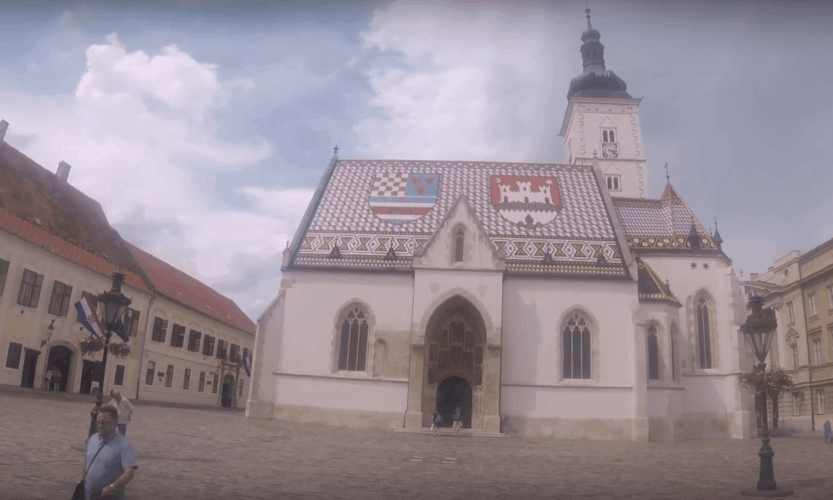
Whether you’re looking for destinations around Europe to visit during your European road trip, or you’re just looking for a quick city trip, chances are you might have considered Zagreb. Here’s why you should, or shouldn’t, go there.
Disclaimer: most of the images I’m sharing with you in this post are taken from my travel video, which is why they’re low quality. I’m sorry, I didn’t really take a lot of pictures, but I focused mostly on the video.
As you may or may not know, my family and I spent four days in Croatia last week. The main objective of our trip was to visit Plitvice, but we stayed in Zagreb for accommodation and to explore the city. Yes, I realize that strolling around in a foreign city for three days doesn’t really make me qualified to tell you why you should and shouldn’t visit – but I was able to get a pretty good understanding of Zagreb’s positive and less positive points.

If you’re going to Zagreb, the chances of you finding some junk on the streets are incredibly slim. The city centre is ridiculously clean. Admittedly, this wasn’t something I was expecting from a big city in eastern Europe, but hey, no complaints here!
When I say the city is clean, I’m mostly talking about the streets and public places, though. Some of the buildings look a little rough around the edges, and at times even straight up unappealing. But I guess that’s the case in most, if not all, major cities around the world.
If you’re doing a road trip through eastern Europe, Zagreb is the perfect place to begin. For starters, Croatia is located fairly centrally within Europe. Most other European countries and major cities are easily accessible by plane, train or bus.
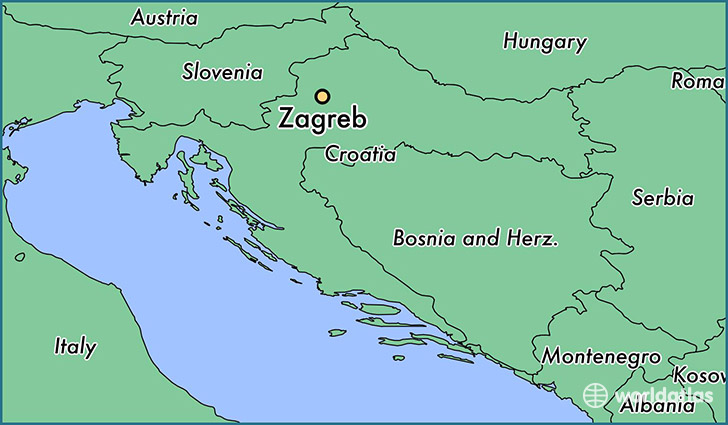
Besides, it’s easy(ish) to find a fairly cheap apartment or hostel in the city centre of Zagreb. That means you’re in the centre of the centre of the centre. Could it get any more central than this? (Spoiler alert: no)
Compared to other major European cities like Paris and Rome, Zagreb is a cheap place to travel to. You might pay a little more for your airplane ticket, but I guarantee you’ll make up for that lost money with the money you spend on food, drinks and shopping.
Quick tip: if you’re coming from a country other than Croatia, you’ll have to convert your cash. The official currency is the Croatian kuna (1 HRK = 0.13 EUR = 0.15 USD).
I’ve heard that the people in Zagreb have been called the Dubliners of the East. Both people possess the immeasurable quality of being friendly and open-minded toward strangers.
To continue the analogy with Paris and Rome, inhabitants of the big European cities will definitely give you weird looks when you take a picture of yourself, when you look on a map to see where you’re going or when you put on sunscreen. In Zagreb, people are accepting and accommodating of tourists and they don’t make a big fuss out of them.

Another thing that surprised me about the people in Zagreb is their knowledge of the English language. Obviously, most people in big cities have a basic understanding of English and know how to express themselves, but the Croatian people even have a great accent and can speak with ease and with a broad range of vocabulary. I must say, as an English major, I was impressed.
Now, on to the drawbacks of Zagreb. First – and foremost – the food. Croatian cuisine isn’t really something you should incorporate into a culinary road trip. I mean, there are obviously worse things to survive on than schnitzel and French fries, but it’s not something I would travel across Europe for.
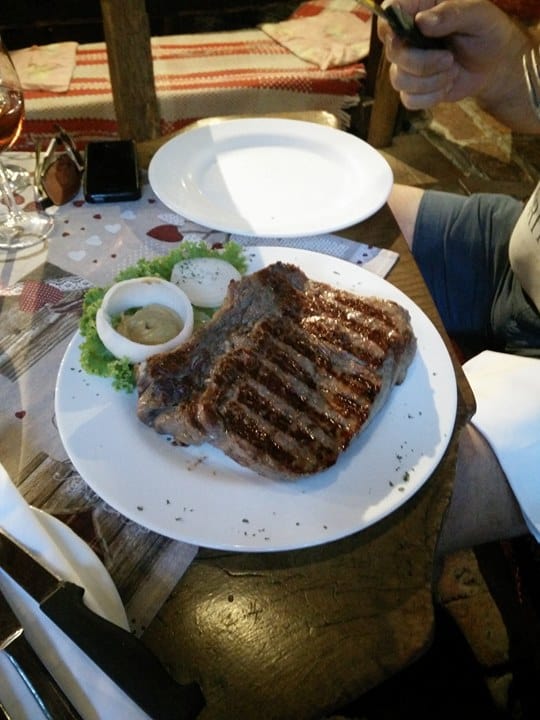
Opposite to what Perk 1 would have you believe, there are very few sincerely beautiful locations in Zagreb. Undoubtedly, someone living in Zagreb would tell you something else, but that’s just because they’re too proud to admit that they really don’t have that many things to see.
Keep in mind, I’m not saying that there’s no Croatian heritage and culture to be found in Zagreb. I’m only pointing out that the actual buildings and sites left much to be desired.
People from India, New York City or Italy might feel tempted to object, but I felt like the traffic in Zagreb was pretty crazy. There were traffic lights, but nobody cared whether they were on green or on red. People crossed the street whenever and wherever they saw fit, speed limits appeared to be relative and you can pass cars on the highway left or right.
To an experienced driver who is used to being in these traffic situations, it might not seem like much. But to me, a whimsy kid who doesn’t even have his license yet, it was a true sight to behold.
Zagreb is a decent city. I feel like it’s a good thing that I’ve seen it once, but I don’t feel the need to return to the Croatian capital any time soon – if ever.
You have to make the decision for yourself, and weigh out the benefits and the disadvantages of visiting Zagreb. If you want to visit a place where you can take loads of beautiful pictures to show off to your friends, I’m afraid Zagreb is not for you. If you want to explore Croatian culture and maybe take a day trip to Plitvice, go for it!
As always, thank you guys very much for reading!
-S
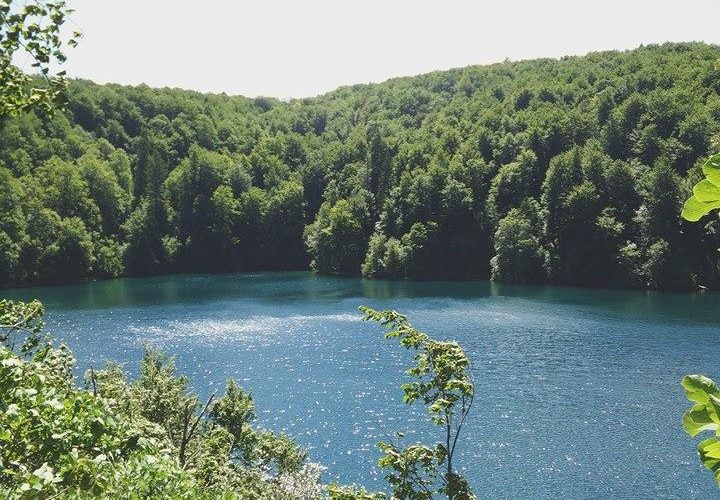
If you’re ever planning to take a trip to anywhere in Croatia, you have to add Plitvice to your itinerary. Still having doubts? Let me convince you of the beauty of Plitvice in this post.
Disclaimer: I took every picture in this post myself. I did that with my phone, which is the reason why the quality may not be ideal and why most of the pictures are in portrait mode. My apologies for that.
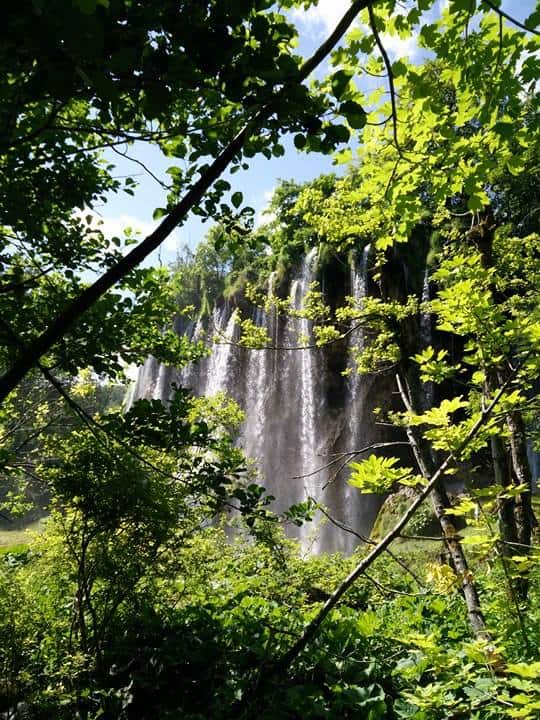
For those of you who are reading this post and are still not sure what Plitvice actually is, I’m going to try to explain. Plitvice, also known as Plitvička Jezera (Nacionalni Park) or Plitvice Lakes National Park, is a nature reserve located in Croatia.
The park is mainly known for its beautiful hiking routes and stunning lakes and waterfalls.
Now that everyone knows what I’m talking about, we can move on to the reasons why you should consider giving the park a visit. Buckle up!
If you’re coming to this nature reserve, you’re most likely going to be combining it with a visit to one (or several) key city in Croatia, such as Zagreb and Split. There are some convenient ways to get to Plitvice from these cities.
First off, the easiest option is to hire a rental car and drive yourself. That’s what we did. Coming from Zagreb, it took us about two hours to get there. According to Google Maps, a trip from Split would take you around two hours and 45 minutes.
The main advantage of hiring a car is that you have more freedom on the road. If you want to stop in a small town to grab a bite on your way back, you can do that. For example, we stopped in Rastoke, a very small town (only 62 inhabitants!) between Zagreb and Plitvice.
Secondly, it’s possible to get to Plitvice by bus. Using Flixbus, a one-way ticket from Zagreb would cost you €13 and about two hours of your time. If you’re starting in Split, you’d have to pay €22 and you’ll lose around four hours.
I recommend taking the bus if you don’t feel like driving, if you don’t have your driver’s license yet, or if you just want to chill for a couple of hours before spending a day hiking along waterfalls and lakes.
Staying in line with the generally cheap Croatian prices, the entry fee to Plitvice Lakes is definitely worth it. You can check out the price you’ll need to pay on this website. Keep in mind, the prices are listed in Croatian kuna (HRK). You can convert your currency to HRK here in order to get a better understanding of the prices.
Without a doubt, the most important reason that so many people want to visit Plitvice (even though you might never even have heard of it before now) is its fascinating nature. If you’re a fan of travel inspiration, you should honestly consider creating a trip based around Plitvice.
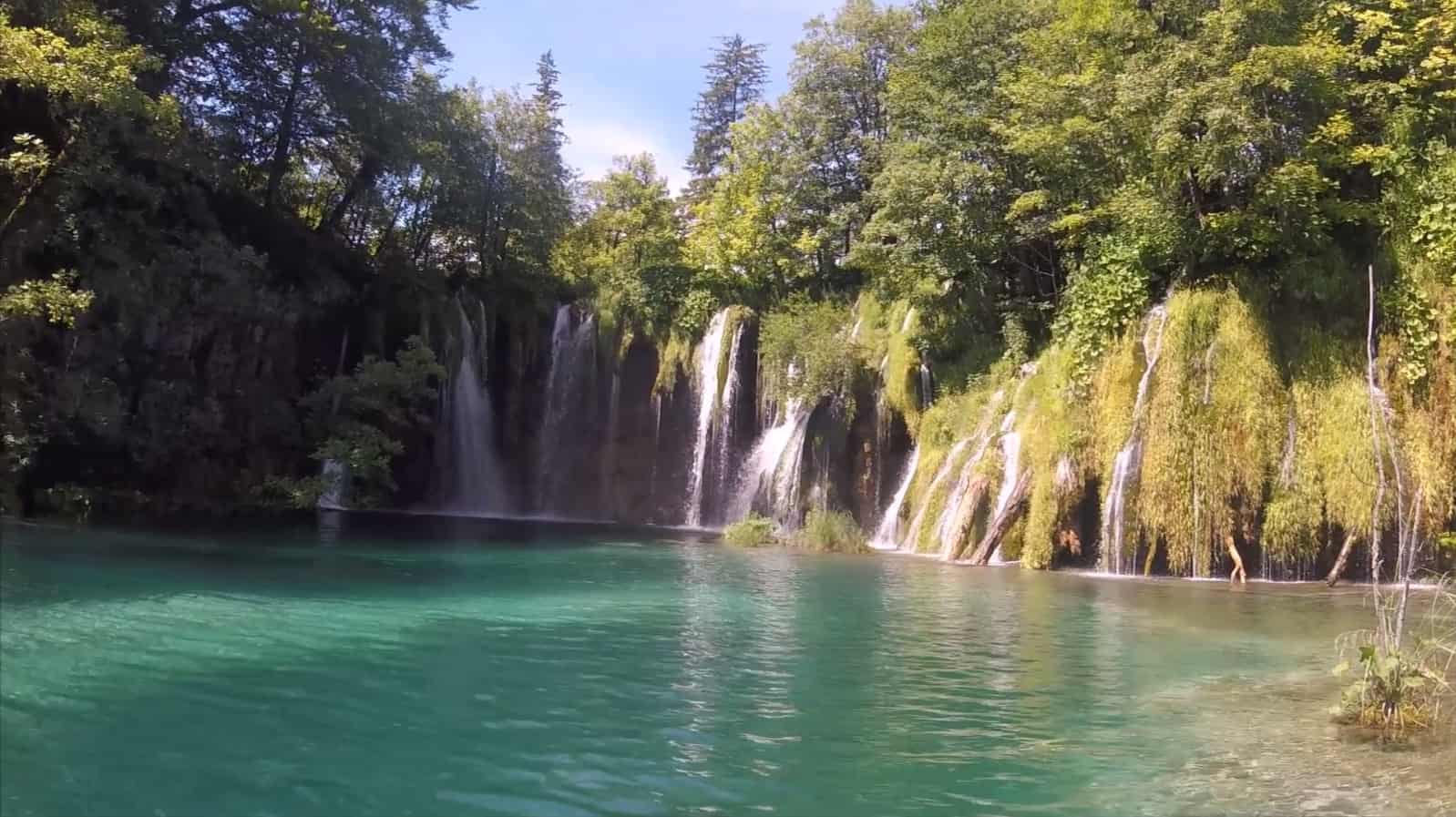
Does this picture really even need any explaining?
If I’m honest with you, I’ve never seen anything quite like the lakes, waterfalls, forests and hiking routes at Plitvice. It’s something that can’t really be explained. You’ll just have to find out for yourself.
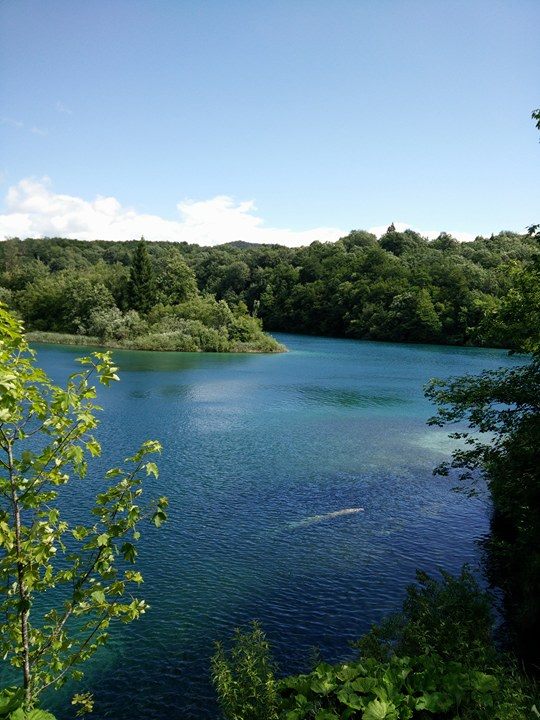
Some people might go crazy when this happens, but others enjoy it thoroughly. When we were in Plitvice, the other tourists weren’t so bad. That’s because we went at the end of June. There were some groups of Chinese people and other tourist families, but we were still able to go wherever we wanted without too much interruption.
If you’re going during the summer, you could be confronted with lots more tourists and other people. It could be something you might enjoy. If not, I recommend going between October and June, as that’s when most people don’t even consider traveling.
This reason mostly applies to people who go to Plitvice by rental car, although you could also have a lot of fun on the road in a bus.
There are a lot of things you can do to make your trip more fun. For example, you could play road trip games, you could listen to some music, you could talk about the meaning of life, … The possibilities are endless.
For this specific Croatian road trip, there are some other things you could do. As it turns out, a lot of the Croatian houses, buildings and landscapes on the way to Plitvice are quite fascinating to watch. Many buildings still show signs of the Croatian War of Independence. For example, we saw one house that was completely pierced with bullet holes, but it was still standing.
For anyone who likes walking through nature just for the sake of admiring nature, Plitvice is the way to go. (Also, for all of you people who are always trying to find cool Instagram picture spots, look no further!)
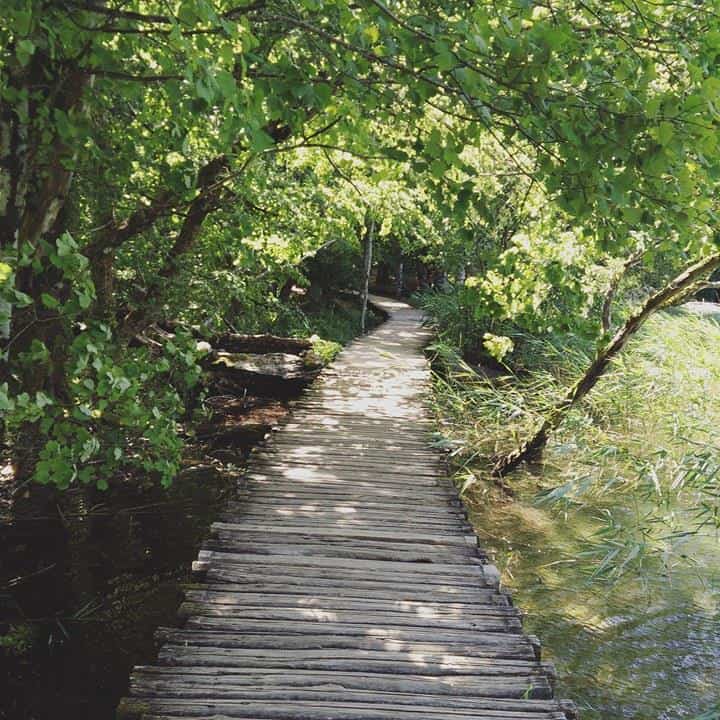
When you’re visiting Plitvice, you’ll be walking on cute pathways like this one
After a day of hiking in Plitvice – you can do tours ranging from one hour to 8 hours – there’s no doubt that you’ll be tired, but you’ll also be more than satisfied. I, for one, have never hiked in a more beautiful place.
Fun extra: you’ll be doing tons of cardio, so there’s no need to go to the gym!
When you’re visiting Croatia, this might not apply to you. But when we were there, it was SO HOT. The mist coming off the waterfalls was a welcome source of cooling down after walking in the nature park.
Then again, if you’re traveling between October and June, like I recommended earlier, chances are that you’ll already be cold enough when you’re there.
If you’re coming by rental car, you should consider leaving your car at entrance 2. This entrance is located right at the centre of the park, which means you could go to either side relatively easily. We parked our car at entrance 1, which was also okay.
Well, I hope you enjoyed reading this and I hope I might have convinced you to consider Plitvice for your next holiday. Feel free to let me know what you thought about this post.
Thanks for reading!
-S
Design by NXNW.